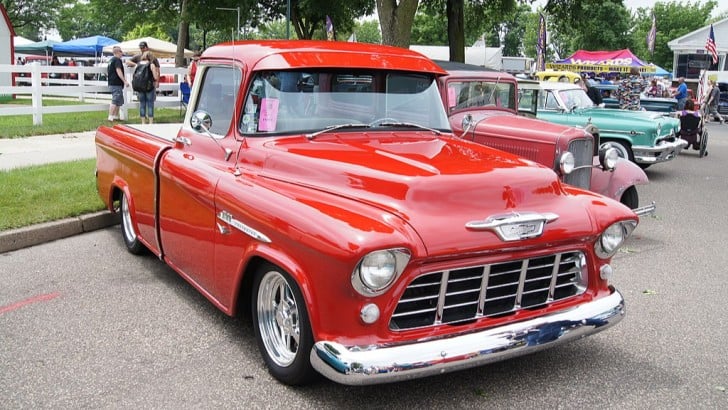What was the world's first mass-produced civilian four-wheel drive car, introduced in 1945?
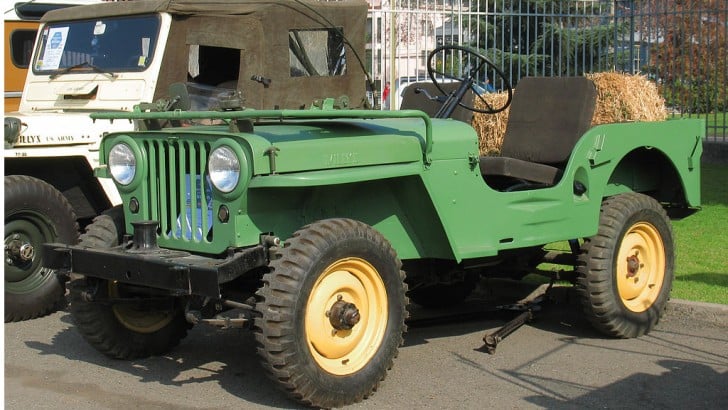
In 1945, Jeep introduced the Willys — the world's first mass-produced civilian four-wheel drive car. The CJ Jeeps were built for 45 years and they were considered "America's workhorse car" and "the most successful utility vehicle ever made."
This truck was introduced in 1956 and it used the Jeep CJ-5 chassis. Name it.
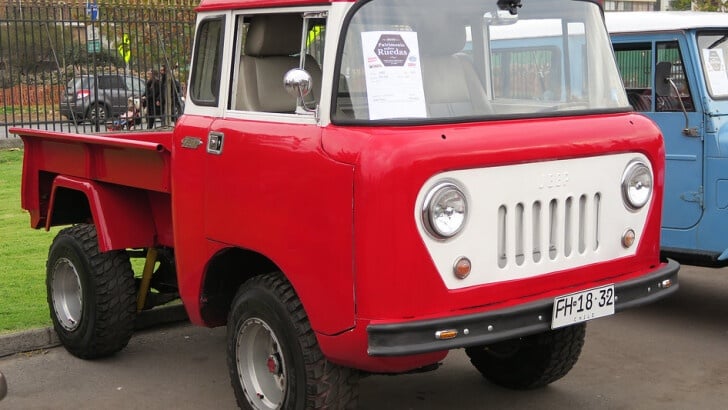
The Jeep CJ-5 chassis was utilized in the 1956 introduction of the Willys FC-150, which had an entirely new body with the cab mounted above the engine, thus the name "Forward Control" or "FC." Willys made an effort with the FC-150 to stake a claim to a share of the 44 pickup truck market that had been so popular in the years following World War Two.
In 1919, this American automaker branched out into a new consumer market by introducing a line of trucks to meet the needs of the delivery business, such as bakeries, dry goods shops, and even fire departments. Name their first truck.
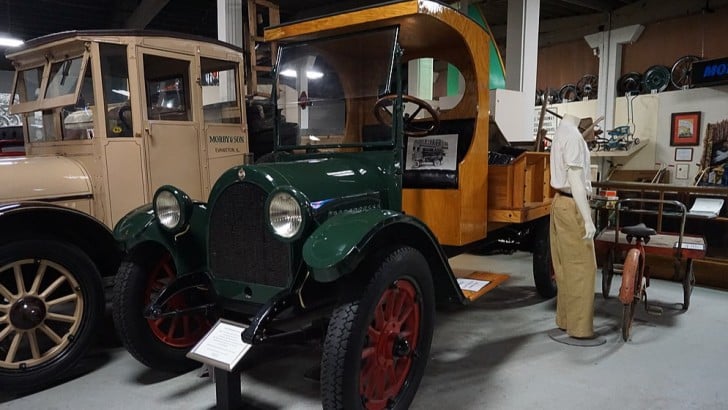
The 1919 Oldsmobile Economy Truck was powered by a four-cylinder engine and a variety of bed styles were available. It was quite popular as it was well-built and designed with heavy hardwood stock used for the floor and side panels. Its advertising slogan was "There's the truck for my business."
Name this highly-sought after classic, a truck with plenty of style and personality designed to compete with the Chevrolet Cameo.
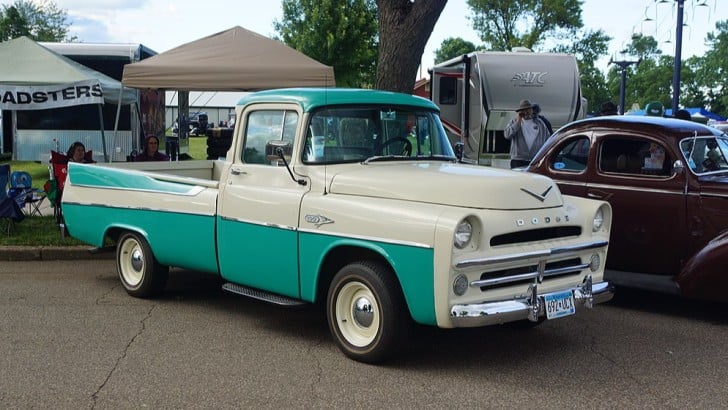
The Dodge Sweptside pickup is a classic vehicle that has been around since the 1950s. It was one of the first pickups to feature a sleek, swept-back look in its design, giving the truck a unique and stylish look that was ahead of its time. The Sweptside was offered a variety of engine options, ranging from a straight six to a powerful V8, and could be had with either two or four doors. It was a popular choice for families and workers alike, with its impressive payload capacity and reliable performance.
In terms of style, this 1967 truck launched a new age of pickups. Name it.
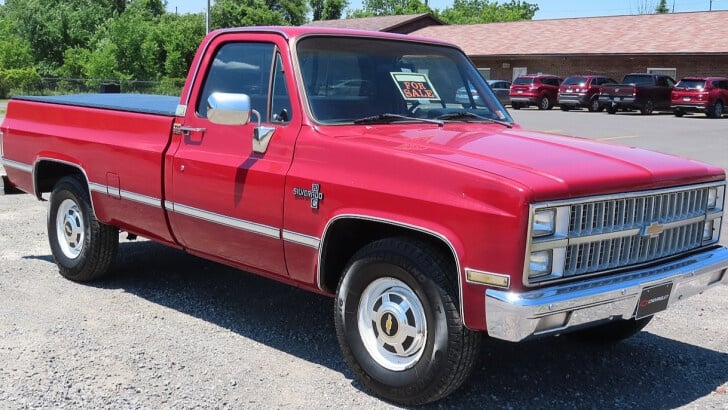
One of the longest-running production cars in American history was the Chevrolet C/K Series. The original generation C/K really made its debut way back in 1959. After more than 40 years and four iterations, the Chevrolet C/K was terminated in 2002. The second generation, which made its debut for the 1967 model year, is one of the most significant C/Ks.
What's the first pickup truck to be fitted with a V8 engine?
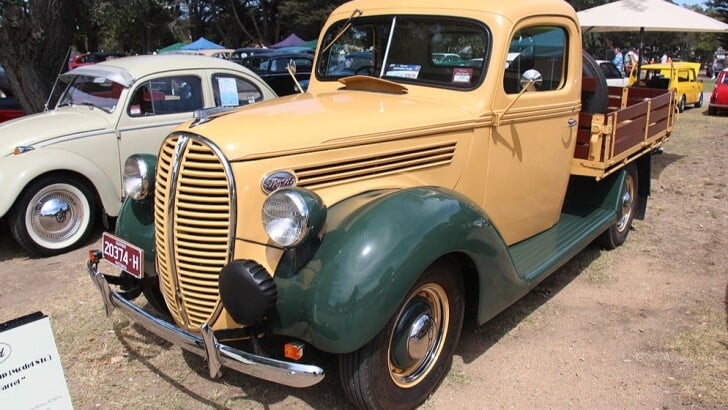
Only 15 years after introducing the first-ever pickup truck for the general public, Ford Motor Company once again changed the automobile industry. The first pickup truck with an eight-cylinder engine was the freshly released 1932 Ford Flathead V8. They had no idea that the V8 motor would continue to be a popular choice among enthusiasts for many years to come. A 3.6L V8 engine was mounted underneath the hood of the Ford Flathead V8 that produced 65 horsepower.
Name this iconic vehicle, built by a German manufacturer and introduced in 1979.
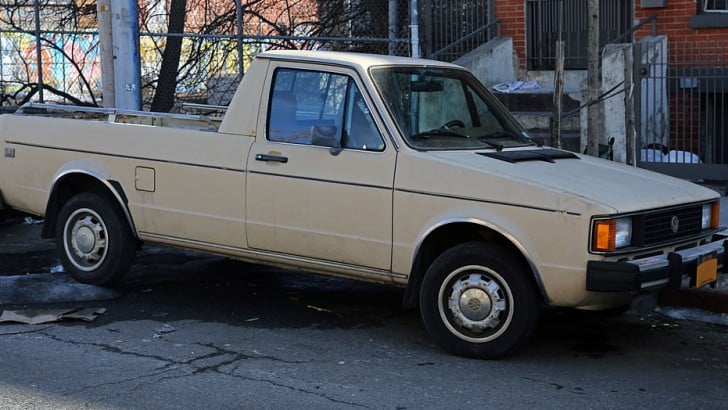
The VW Rabbit Caddy is an iconic vehicle from the Volkswagen brand. It was first introduced in 1979 and was sold until 1983, during which time it was a popular choice for small business owners and family drivers. With a low price tag and reliable performance, the Rabbit Caddy offered a great option for anyone looking for a practical, affordable vehicle. The Rabbit Caddy had some impressive features for its time, such as a spacious interior, a roomy cargo area, and a powerful engine.
Name this Japanese pickup truck, produced from 1955 through 1997.
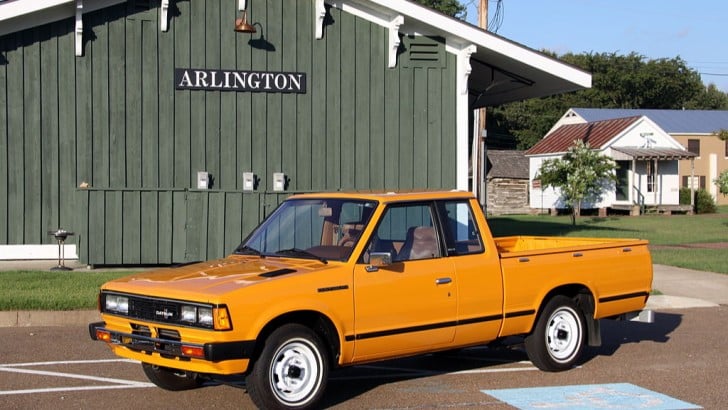
The Datsun Truck was a small pickup truck produced by the Japanese automaker Datsun. It was introduced in 1955 and remained in production until 1997. It was available in both two-wheel and four-wheel drive configurations and was offered with a range of engines, including a 1.8-liter gasoline engine and a diesel option.
This special edition truck remains one of the most sought-after trucks ever. Produced from 1989 to 1989, it was a collaboration between two automotive giants. Name it.
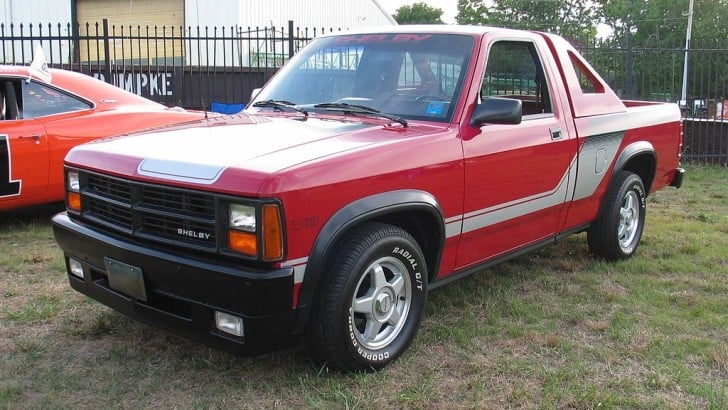
The Dodge Shelby Dakota is a special edition pickup truck that was produced by Dodge from 1987 to 1989. It was the first collaboration between Shelby and Dodge and featured a unique blend of performance and style. The Dakota was equipped with a 5.2-liter V8 engine, a four-barrel carburetor, and a limited-slip differential. with only 2,500 examples produced in total, it has become a collector's item.
Name this off-road vehicle produced from 1961 to 1980 in Fort Wayne, Indiana.
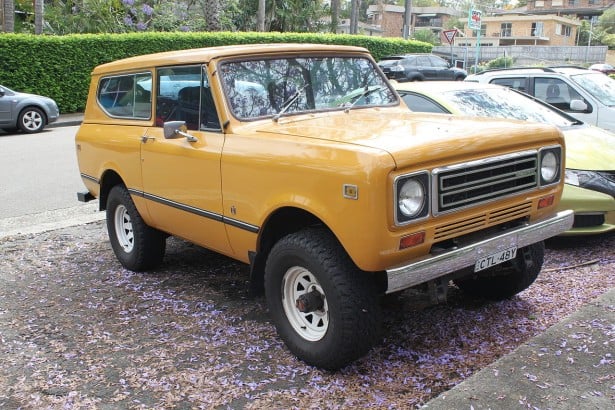
International Harvester designed the Scout as a competitor for the Jeep CJ 4x4. The Scout was introduced in 1960 as a two-door truck with a removable hard top and an optional half-cab pickup.
Name this large, heavy, four-wheel drive utility vehicle produced from 1992 to 2006.
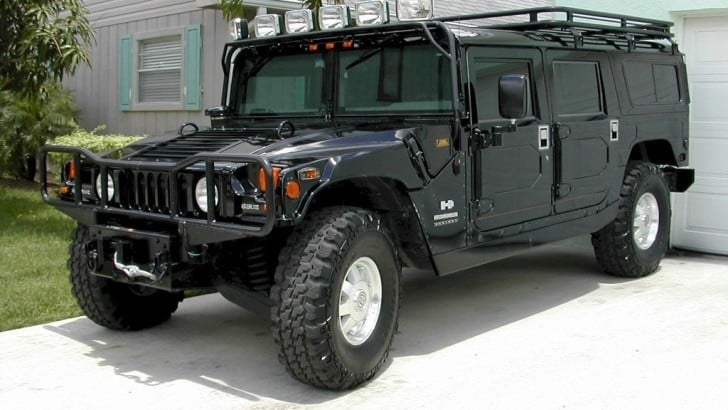
The 1992 Hummer H1 was the first Hummer to come onto the market, setting the standard for the rugged, off-road vehicles that are popular today. It was the civilian version of the military Humvee and shared many of the same features, including its powerful 6.2L diesel engine and four-wheel drive. It's a huge vehicle, with a massive curb weight of over 8,000 pounds, capable of taking any terrain, no matter how harsh.
What truck can be considered the ancestor of modern RAM trucks?
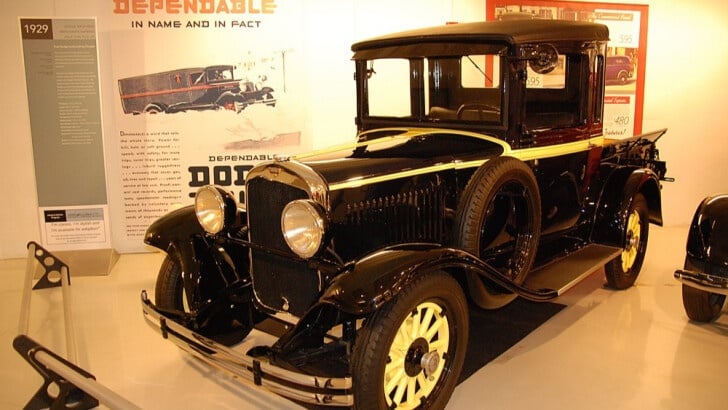
The Dodge Brothers never produced their own pickup vehicle, despite what is often believed. Dodge Brothers constructed the 1929 Merchants Express, but by that time, Chrysler had already purchased the firm. Additionally, the Dodge Brothers passed away in the early 1920s. Even so, the Merchants Express can be viewed as the ancestor of modern RAM trucks. A four-cylinder engine that produced a maximum of 45 horsepower was used to propel the Merchants Express. The Dodge Brothers Merchants Express was a sleek, cutting-edge, and ground-breaking pickup truck in its era.
The first generation of this vehicle was introduced in 1962 as a successor to the Willys truck. Can you identify it?
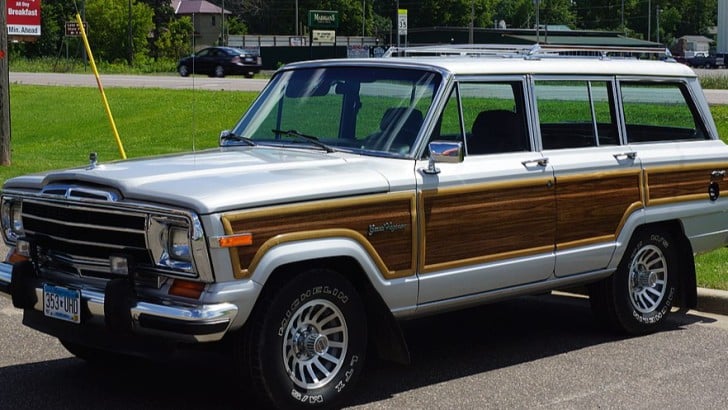
The Jeep Wagoneer was introduced in 1962 as a successor to the Willys Jeep. It shared its body with the Gladiator pickup up truck. A few years later, it was introduced as a station wagon and its design became known as a "sport utility vehicle" or SUV.
Name this unique three-wheeler pickup truck built from 1955 to 1961 by a German manufacturer.
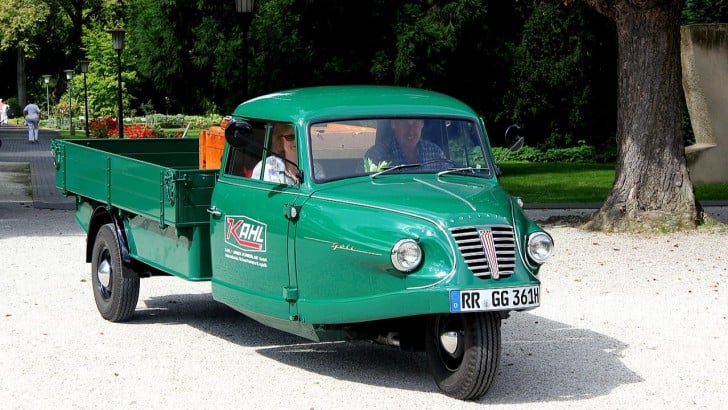
The Goliath Goli was a light-duty truck or cargo van made by Goliath, a subsidiary of Borgward, in Bremen, Germany from 1955 to 1961. It was the successor of the GD750 and the final three-wheeled vehicle produced in Germany, with only 9,904 models being manufactured.
Name this outstanding classic truck, appreciated by both collectors and everyday drivers alike and equipped with a beefy V8 engine.
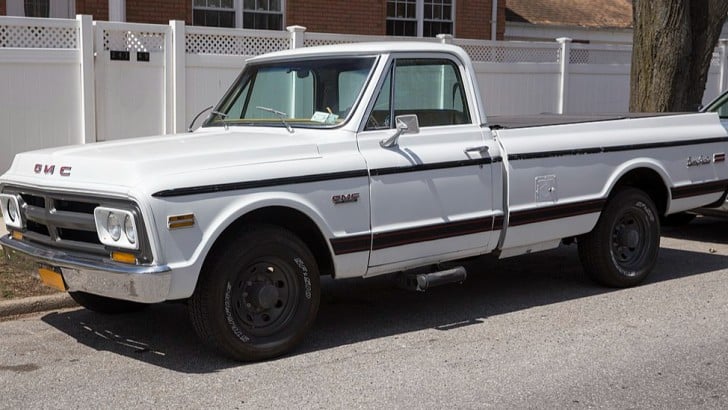
The 1970s GMC C2500 Sierra Grande was popular for its versatility, ruggedness, and power. It came with a V8 engine and an optional four-speed transmission. It was available in two- and four-wheel drive configurations, and featured a range of luxury and convenience features, such as air conditioning, power steering, and even a cassette player.
What line of compact vans and trucks were produced from 1964 to 1970 under the Dodge and Fargo marques in North America?
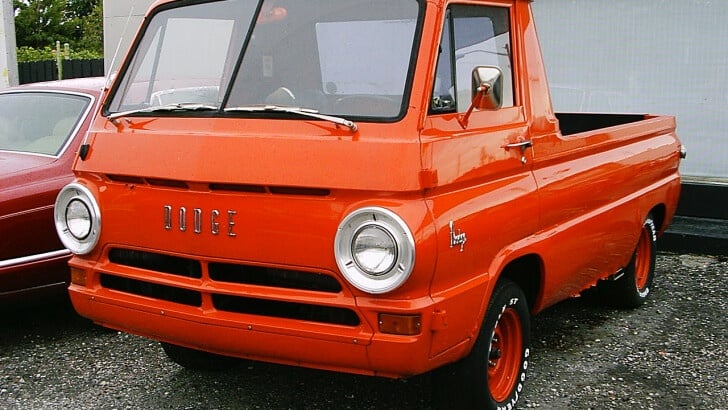
The Chrysler Corporation produced and sold the A100 line of small vans and trucks between 1964 and 1970 under the Dodge and Fargo brands in North America. Along with the Volkswagen Type 2, the Ford Econoline, Chevrolet Van, and Chevy Corvair Greenbrier were competitors of the A100.
What Jeep model was a rebadged version of the Jeep Wagoneer featuring a wider D-pillar?
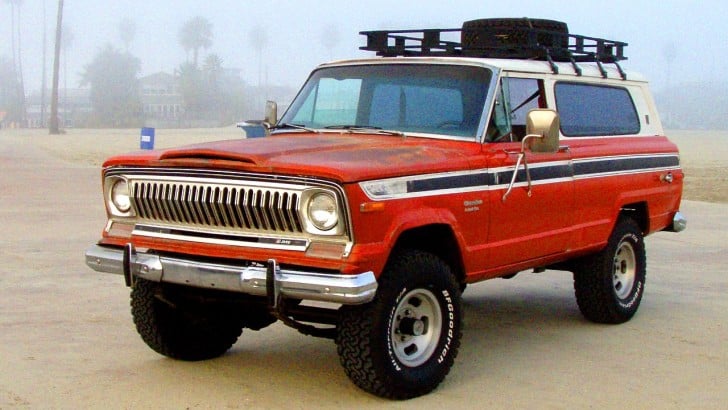
The Jeep Cherokee was introduced in 1974 as a cooler and sportier version of the Jeep Wagoneer. In fact, the term "sport utility vehicle" was introduced for the first time in a 1975 Cherokee sales brochure. While the Wagoneer appealed to an older audience, the Cherokee became the desired truck for the young and the fresh-out-of-college market.
Name this legendary French car also built as a pickup in 1948, often called an "umbrella on wheels."
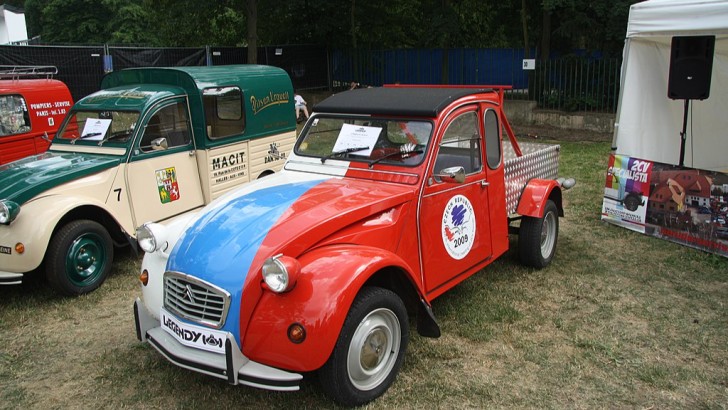
The Citroen 2CV Pickup is an iconic French car from the 1950s. It was designed with a utilitarian purpose in mind, as a simple and affordable vehicle for the average person. It has a unique style, with its curved shape, low profile, and narrow track widths. It has a two-cylinder engine and a four-speed manual gearbox, which make it great for slow, relaxed driving. The Pickup variant has a large cargo area, perfect for carrying goods and equipment. It also has a comfortable cabin with a folding bench seat, allowing for up to four passengers.
Name this German truck — as important for West Germany as the VW Beetle.
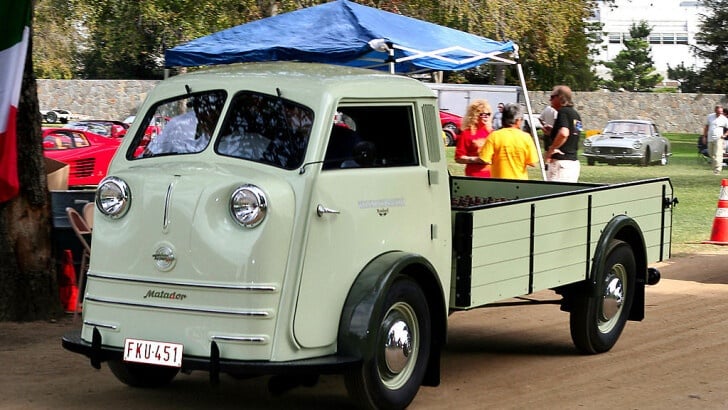
The Tempo Matador is an extremely uncommon VW-powered truck that was created in 1951 by Vidal & Sohn, a Hamburg, Germany-based company.
This truck was based on the GMC truck platform and featured the same body style as the Chevrolet El Camino. Can you name it?
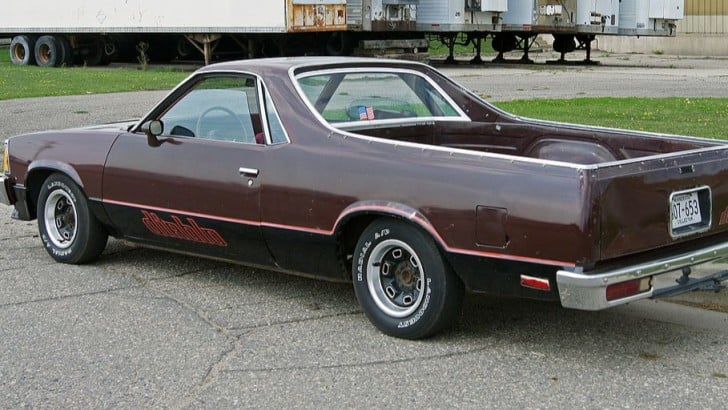
The GMC Caballero was a distinct vehicle produced by General Motors from 1971 to 1977. This two-door coupe utility vehicle was based on the GMC truck platform and featured the same body style as the Chevrolet El Camino. The Caballero was designed to be a more luxurious alternative to the El Camino, offering more comfort and style. It was offered with a wide range of engines, including a V6, V8, and diesel options. The Caballero was also available with a variety of trim packages, including the Royal Knight, Diablo, and Conquista.
This pickup truck was the first vehicle ever produced by Honda. Name it.
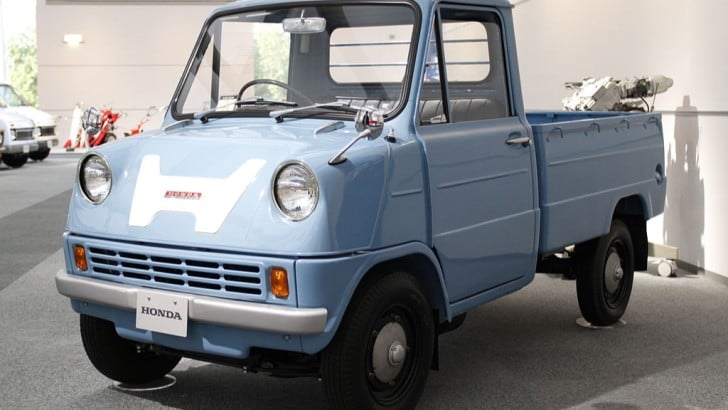
The Honda T360 was the first vehicle ever produced by the Honda Motor Company. It was released in June of 1963, just a few months ahead of the S500 Sports car. The T360 was powered by a 356 cc AK250E DOHC inline-four engine, which was also found in the S360 roadster prototype. This engine generated 30 horsepower at 8,500 rpm, allowing the truck to reach a top speed of 100 km/h (62 mph).
Name this legendary vehicle that has a long-standing reputation for being dependable and reliable.
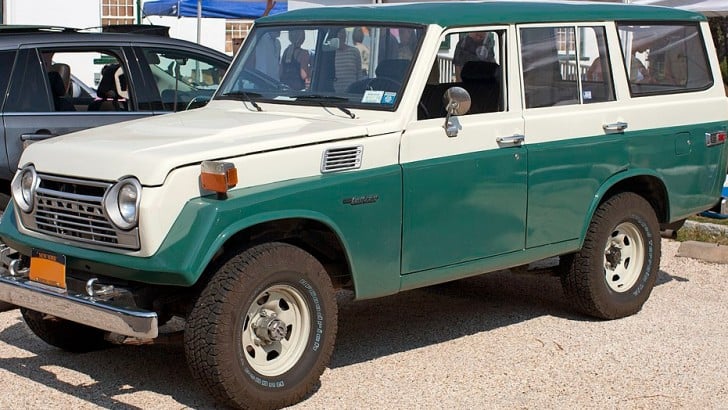
The first generation of the Toyota Land Cruiser had a rugged body-on-frame construction and was powered by a strong gasoline engine. Its four-wheel-drive capabilities made it ideal for off-road use, and it quickly became popular in the United States. The 1950s Land Cruiser had a simple, no-nonsense design that made it a favorite among farmers, ranchers, and adventurers alike. It was so reliable that it was used in the Australian Outback, the African bush, and the South American jungles. The 1950s Toyota Land Cruiser remains one of the most iconic vehicles of all time.
What small pickup truck was produced by the Italian automaker Lancia between 1939 and 1953?
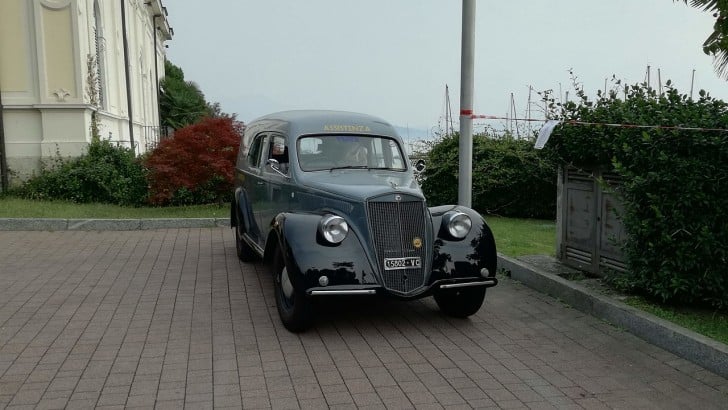
The Lancia Ardea was a small vehicle made by Italian car manufacturer Lancia from 1939 to 1953. It was known for having the smallest V4 engine in a family car. Besides the 23,000 standard-bodied saloons, a special model with a lengthened body and squared-off rear cabin was made for use as a taxi in Rome between 1940 and 1942. After the war, over 8,500 versions of the Ardea called 'furgoncini' (light vans) and 'camioncini' (car-based light trucks) were created.
This classic Japanese truck was introduced in 1967 and was equipped with a 1.2 liter straight 4 engine. Name it.
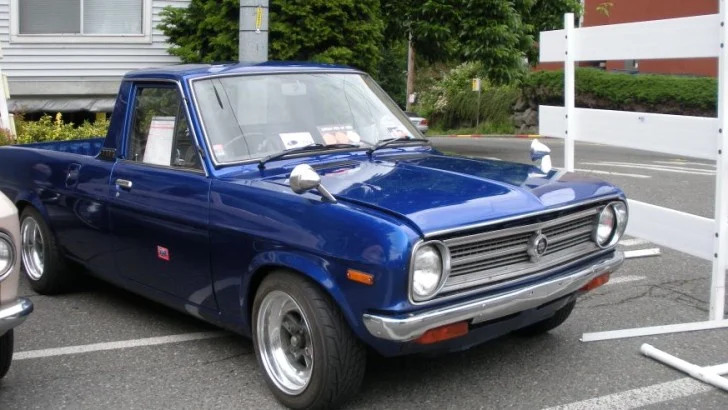
The 1967 Nissan Sunny pickup was powered by a 1.2 liter straight 4 engine and offered a 4-speed manual transmission or a 3-speed automatic. It featured a robust suspension that was designed to handle heavy loads, and the interior featured a modern design with a two-tone dashboard and comfortable seating. The Nissan Sunny pickup is a classic vehicle that still appeals to those who appreciate vintage vehicles with modern reliability.
The fifth generation of this truck was offered from 1967 to 1972 and it featured plenty of engine options, sharper styling, and a larger cab. Can you name it?
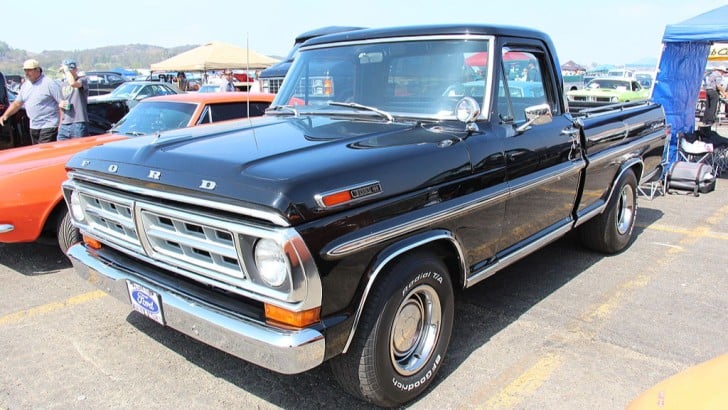
The Ford F-100 remains one of the most iconic trucks of the 1960s. The 1969 model featured a new 302 Windsor V8 engine option, the 1970 model included a completely new grille, and the "Ranger XLT" was added as a top trim level.
What's the name of this ultimate performance truck, introduced in 1991 and featuring a turbocharged V8 engine?
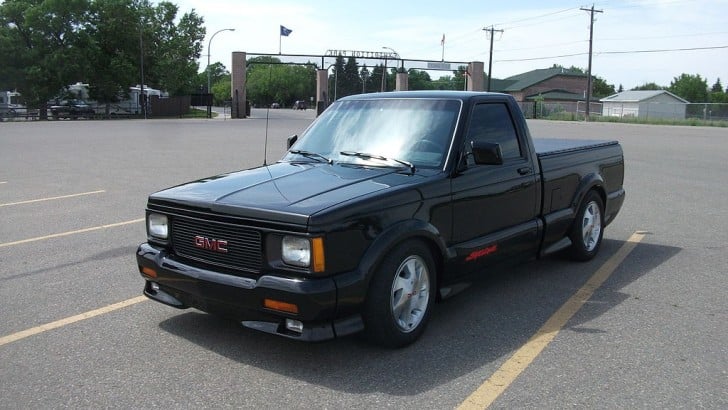
The GMC Syclone was designed to be a high-performance vehicle, with a powerful 4.3L V8 engine, 4-speed automatic transmission, and all-wheel drive. It was also the first production truck to feature an anti-lock braking system.
Name this Italian pickup truck that was also available as a cabover van, built from 1954 until 1983.
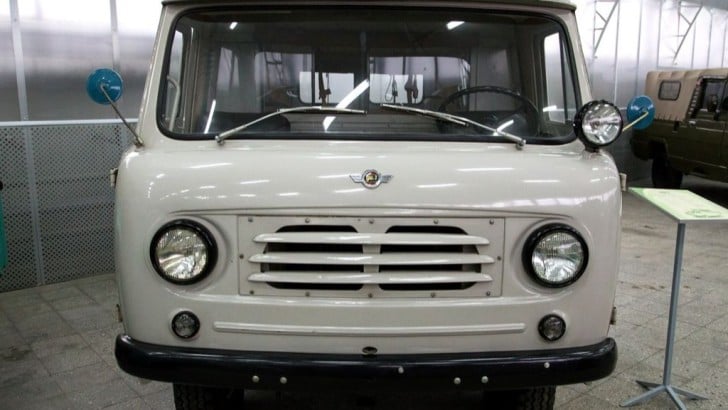
The Alfa Romeo Romeo was first released in 1954 and was available in various forms, including a van, a cabover, and a pickup truck. The production of these vehicles lasted until 1983 when they were replaced with vehicles from Fiat and Iveco. The Autotutto was powered by the 1,290cc Alfa Romeo Twin Cam straight-four engine, which was tuned to produce 35 bhp (26 kW). It could reach a maximum speed of 60 mph (97 km/h). An optional two-cylinder, the supercharged diesel engine was also available, producing 30 bhp (22 kW). This same engine was later used in the Giulietta Berlina.
Name this Ford series introduced in 1938 as an upgraded version of its base model.
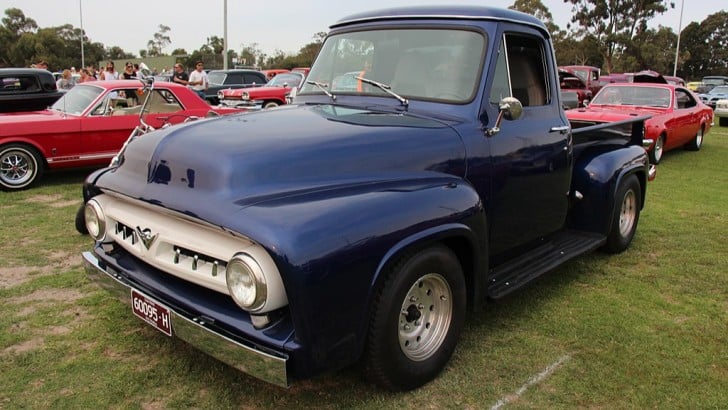
Ford Motor Company introduced its De Luxe Ford line in 1938 as an upgraded version of its base model. This version offered more features than the Standard Model and was more affordable than their Lincoln offering. This line of cars was referred to as a "marque within a marque" and was available through 1940. In 1941 Ford released the De Luxe and Super De Luxe trim options, but these were not marketed as a separate line. Eventually, Ford discontinued this approach as Mercury Eight sales increased.
Due to its unique wrap-around windshield, this truck immediately gained notoriety upon its introduction in 1955. Name it.
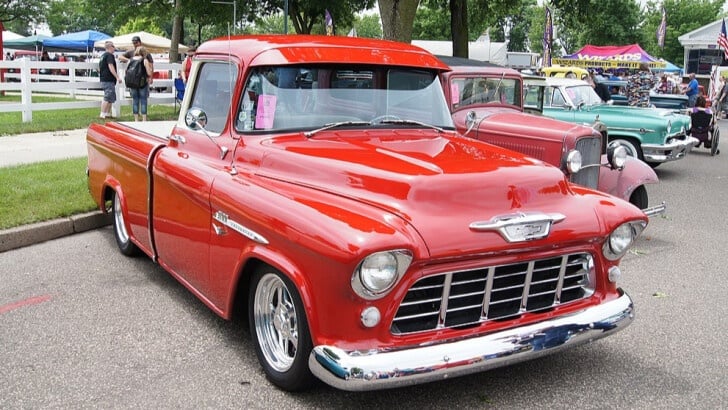
In the ensuing ten years, other manufacturers would heavily borrow design cues from the Chevrolet Cameo Carrier's snazzy styling. The sleek truck was a part of the Chevrolet Task Force series, which replaced the earlier Advance Series. A power steering system and automatic gearbox were among the many contemporary improvements that the truck was equipped with.
Name this gorgeous sports truck from 1993.
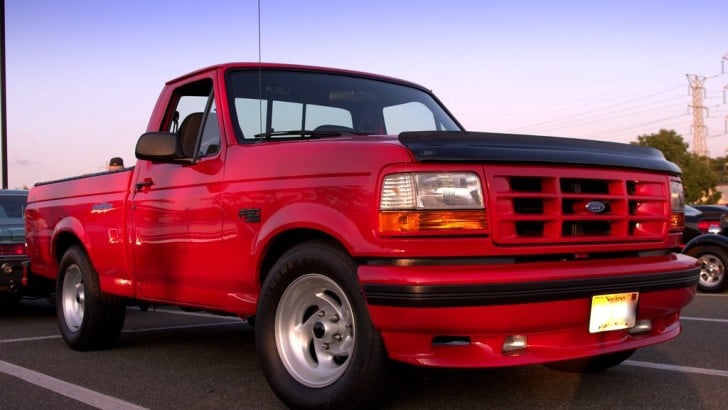
The 1993 Ford F-150 Lightning was a powerful and unique vehicle in the Ford lineup. It was powered by a 5.8-liter V8 engine producing 240 horsepower and 340 lb-ft of torque. It featured a unique aerodynamic design, a lowered suspension, and distinctive styling. It quickly became a favorite among muscle car enthusiasts.
Styled by Pininfarina, this model was offered as a saloon, estate, and pickup. Name it.
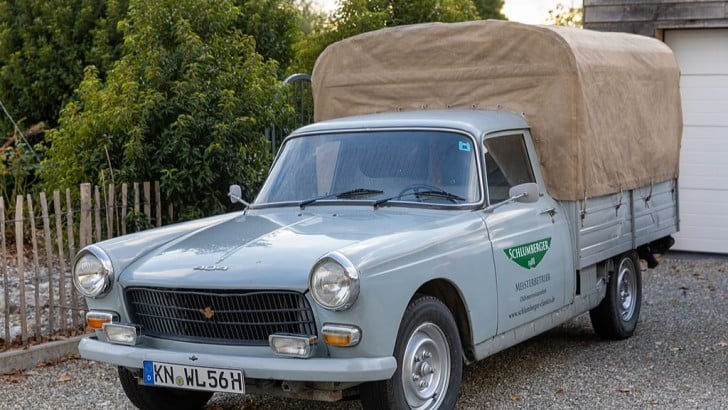
The Peugeot 404 was a popular family car released by French vehicle maker Peugeot from 1960 to 1975, with a truck body style variant available up until 1988. Customers had the choice of a 1.6-liter petrol engine with either a Solex carburetor or Kugelfischer mechanical fuel injection, or a 1.9-liter diesel engine. The car was also available with an optional 3-speed ZF automatic transmission at the Paris Motor Show, similar to the one BMW was offering at the time, as an alternative to the standard column-mounted manual gearbox.
In the early years after World War II, a small vendor in Minnesota stepped up to meet the demand for four-wheel drive light trucks and transformed 2WD GM trucks into 4WD in only hours. Can you name this one?
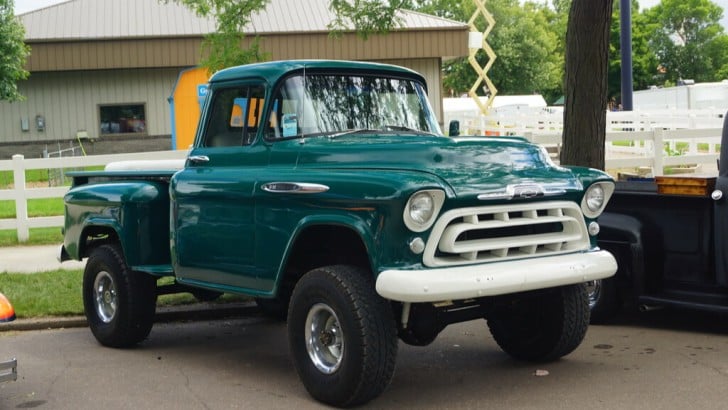
Napco, or Northwestern Auto Parts Company, developed a Powr-Pak 4x4 Conversion kit, which helped transform a 2x2 GMC truck into a four-wheel drive in only a few hours. These transformations date from 1947, however in 1956, the Powr Pak was offered by GMC as a factory-installed option.
Although it was never mass-produced, this was Studebaker's best-selling light truck model up to the 1940s. Name it.
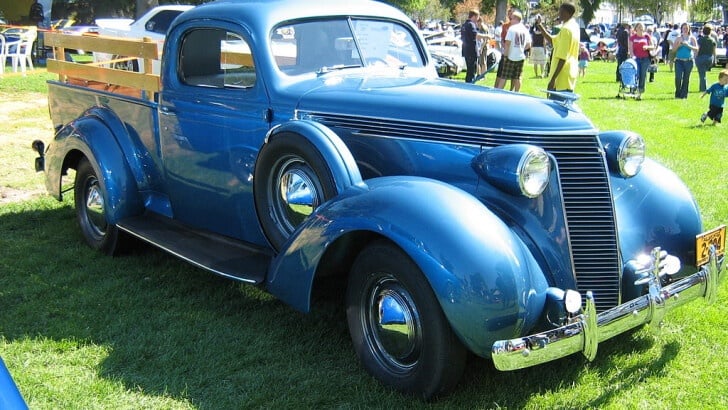
The Coupe-Express was perhaps the most appealing, comfortable, and well-equipped light vehicle in America, with an elegantly contoured, Art Deco-inspired teardrop appearance. Although it was never mass-produced, Studebaker's best-selling light truck model up to 1940 was the Coupe-Express.
This is more of a modern classic, but it's one of the most unique cars ever built. Name this limited-edition, retro-style, retractable-hardtop, convertible pickup truck manufactured from 2003 to 2006.
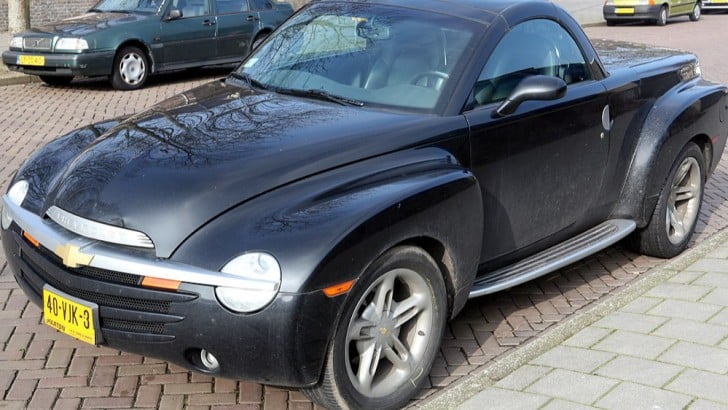
The Chevrolet SSR was a limited-edition, retro-style, retractable-hardtop convertible pickup truck manufactured and sold by Chevrolet from 2003 to 2006. It was powered by a 5.3-liter Vortec 5300 V8 engine delivering 300 horsepower in the 2003 and 2004 model years. With this engine, the SSR was capable of accelerating from 0 to 60 mph in 7.7 seconds and running a quarter mile in 15.9 seconds at 86.4 mph.
Introduced in 1999, the first generation of this model was an all-around excellent pickup truck, with a powerful engine, comfortable interior, and sleek exterior. Name it.
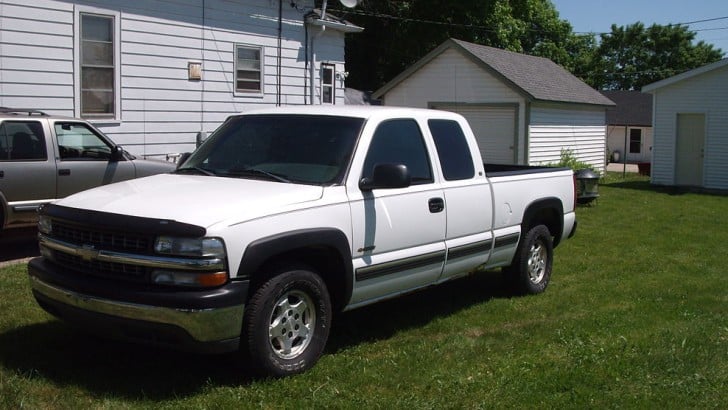
The 1999 Chevrolet Silverado is a classic example of the time-honored Chevrolet truck. It was an all-around excellent vehicle, with a powerful 5.3L V8 engine, comfortable interior, and sleek exterior styling. It was a perfect blend of utility and style and could tackle any job with ease. It was available in both two-wheel and four-wheel drive, so it could tackle any terrain.
Name this classic Japanese light truck produced from 1945 to 1989.
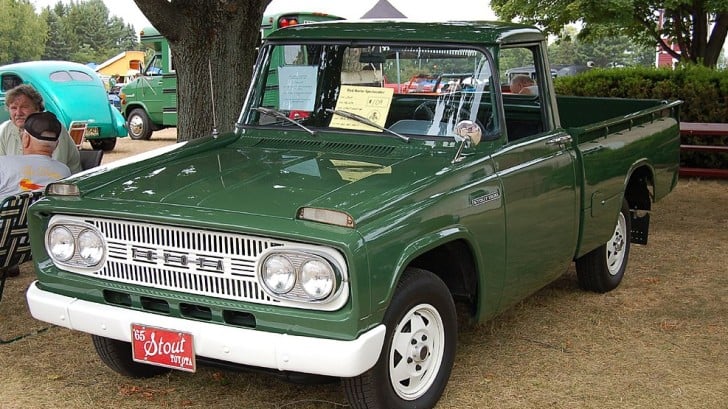
The Toyota Stout was known for its boxy shape, simple design, and robust construction. It was powered by a range of inline-four engine sizes, ranging from 1.5-2.0 liters, and was offered with both a manual and automatic transmission. The Toyota Stout was a reliable and hardworking pick-up truck that was well-loved by its owners and is still sought after by classic car enthusiasts today.
In 1989 Dodge fitted a massive turbo-diesel engine into a D-Series pickup that had previously been used only by heavy trucks and tractors. What's the name of the model equipped with this engine?
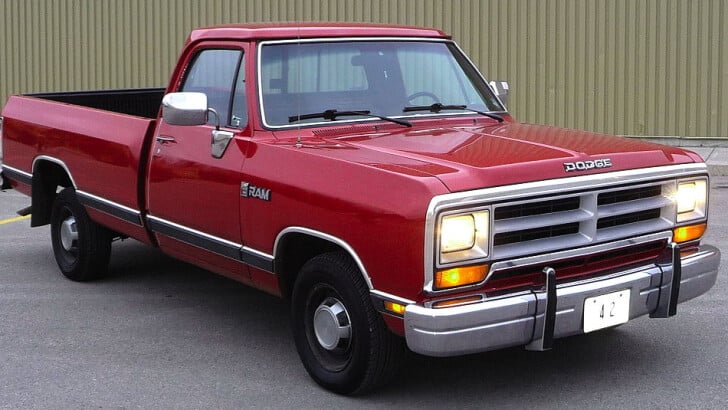
Despite its historical accomplishments, Dodge was mostly ignored in the truck market in the 1980s. All of that changed in 1989 when Dodge fitted a massive Cummins turbo-diesel engine into a D-Series pickup that had previously been used only by heavy trucks and tractors. These trucks with straight-six direct-injection engines were significantly more capable and sophisticated than any diesel models offered by rival manufacturers. Even though it only produced 160 horsepower, the 400 pound-feet of torque it produced at 1,700 rpm was a modernization that brought towing into the present day. For heavy-duty vehicles nowadays, turbo-diesel power is the industry standard.
This cabin on four wheels was built in 1976 and 1977 in limited numbers as a collaboration between General Motors and Chinook Mobilodge Inc. What is it?

The Chevrolet Blazer Chalet was built as a recreational four-wheel drive, allowing drivers to travel to remote locations with a fixed camper shell on the back. Unfortunately, only a few hundred have survived, making the Blazer the dream truck that is difficult to obtain.
Name this truck introduced in 1975 by a Romanian automaker.
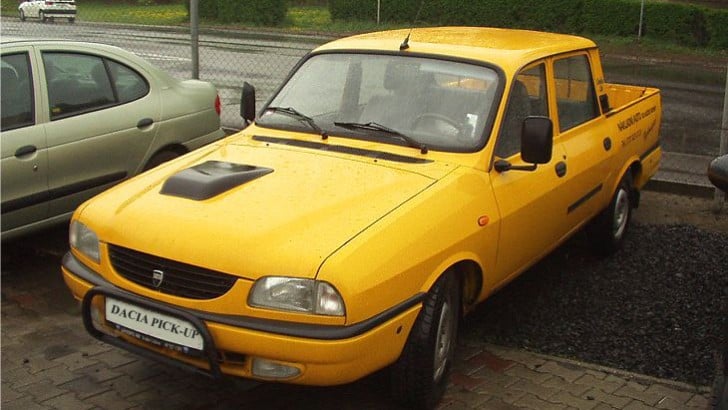
The Dacia Pick-Up was produced for 31 years with a total of 318,969 vehicles created. It was the last model to be based on the Renault 12, which had been the basis for the majority of Dacia's models since the late 1960s. In 2006, the Pick-Up was replaced by the Dacia Logan Pick-Up. Due to its shape, which is similar to a slipper, the car was nicknamed the "Papuc," which means "slipper" in Romanian.
Marketed as the Hilux Surf in Japan, what was this model referred to as in North America?
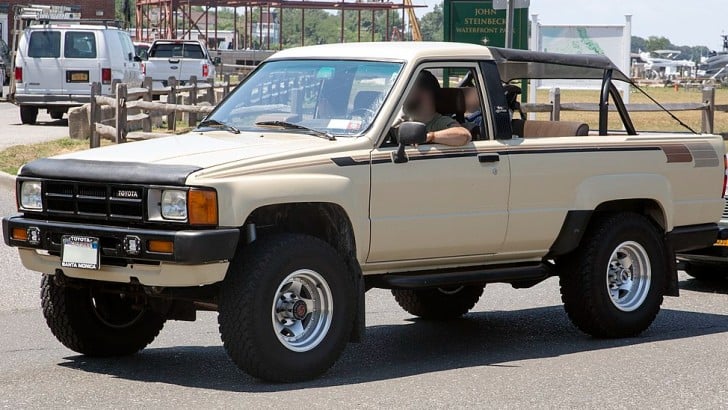
The first generation of the Toyota 4Runner was introduced in 1983 as the Hilux Surf in Japan. It featured a removable fiberglass roof and it was equipped with a 2.4 22R engine that was capable of producing up to 100 horsepower.
What full-size Toyota pickup truck was launched in 1999 as the successor to the Toyota T100?
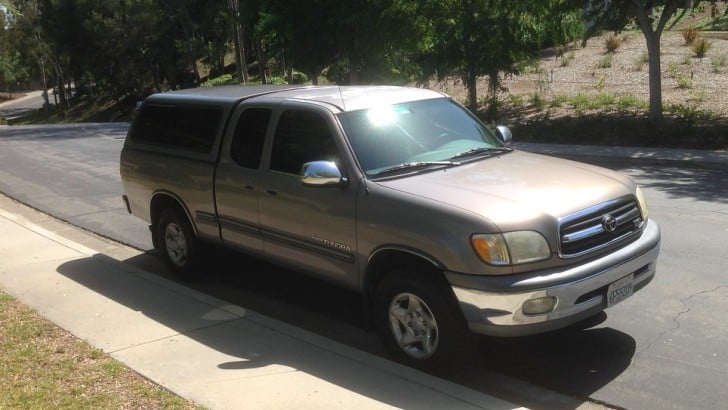
The 1999 Toyota Tundra was a full-size pickup truck that was launched in the United States as the successor to the Toyota T100. It offered a powerful 3.4-liter V6 engine that generated 190 horsepower, along with a four-speed automatic transmission. The Tundra was available with either two- or four-wheel drive, and it had an impressive 7,200-pound towing capacity. The Tundra also came with a variety of standard features, including air conditioning, power windows, and power locks.
What nickname was given to the Ford F-250 4x4 models from 1967 to 1977?
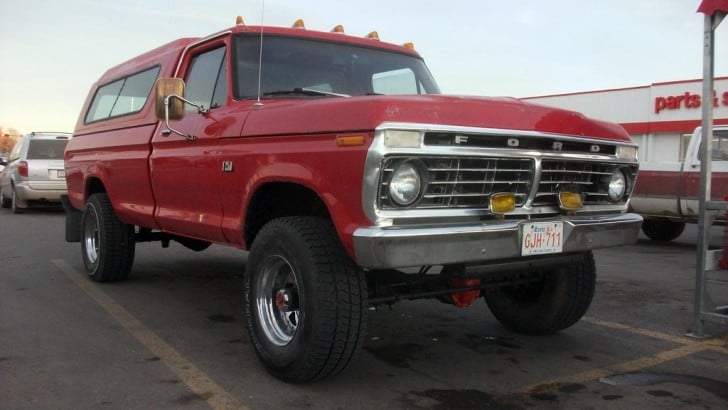
The Ford F-250 "Highboy" was introduced in the fifth generation. Although the Highboy was not an official designation, it became a popular nickname due to the factory suspension lift. To this day, it is a sought-after model with only a few available.
This vehicle was first introduced as a compact off-road truck until it became known as the company's first SUV model. Name it.
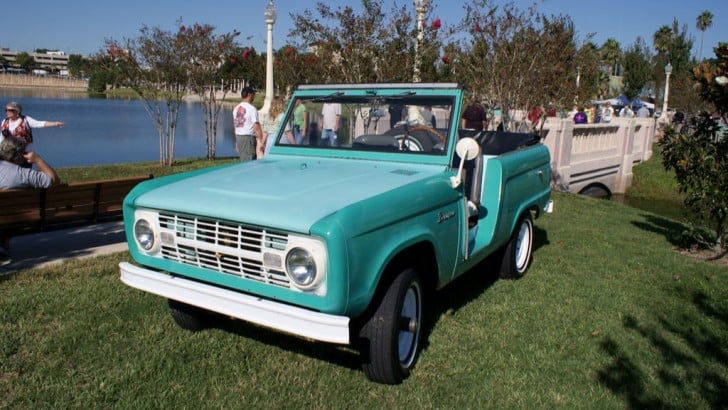
The Ford Bronco was introduced in 1965 to compete against the Jeep CJ-5 and the International Harvester Scout. Its engine, a 170-cubic inch inline-six, was derived from the Ford Falcon and delivered 105 horsepower. The Bronco was discontinued in 1996 only to make a comeback in 2021, after 25 years!
Name the first off-road vehicle manufactured by the famous Italian carmaker, initially intended as a military vehicle.
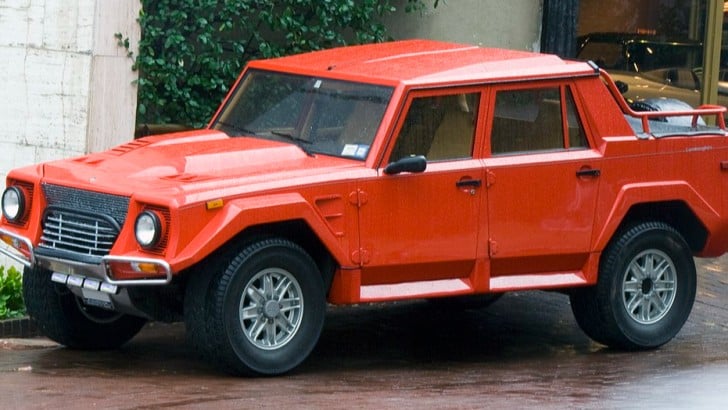
The Lamborghini LM002 is a classic and highly sought-after off-road vehicle produced by the Italian automaker Lamborghini. It was originally intended as a military vehicle but was eventually released to the public in 1986. It was the first off-road vehicle made by Lamborghini and featured a 4WD system, a 5.2L V12 engine, and a luxurious interior. It also had a unique design with a boxy, angular body, and a distinct, angular-shaped grille. The LM002 was produced only until 1992 and is now highly sought after by collectors and enthusiasts alike due to its unique styling, power, and rarity.
What limited model did Ford introduce in 1971 to commemorate victories in off-road races?
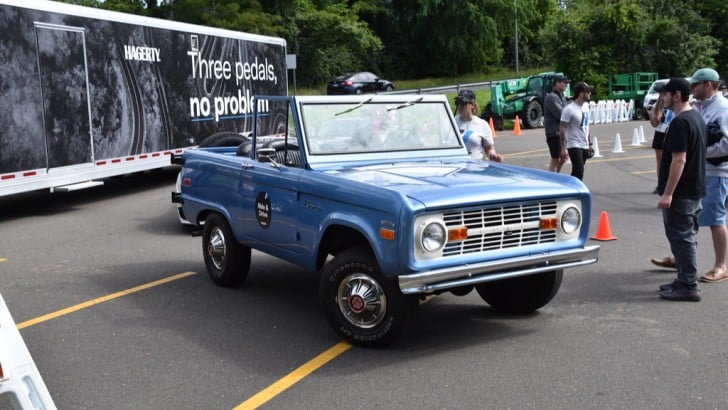
The Ford Baja Bronco remains one of the most cherished off-road vehicles. It was introduced in 1971 as a limited model to commemorate the victories of the Ford Bronco in the Baja 500 off-road races. Nowadays, it has become a prized collector's item with a cult following of its own.
What was the world's first and only rotary-powered pickup truck ever produced?
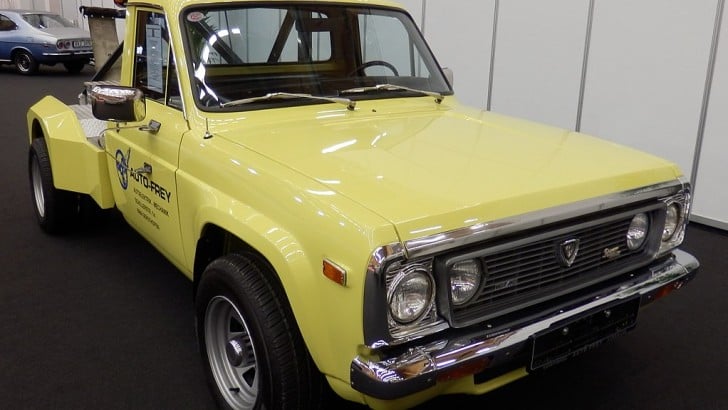
The Mazda Rotary Pickup was produced from 1971 to 1977. It was the first rotary-powered pickup truck ever produced. The Mazda was powered by a 982 cc two-rotor engine, which was capable of producing up to 95 horsepower. It featured a four-speed manual transmission, independent front suspension, and leaf-spring rear suspension.
This truck was manufactured from 1954 to 1961 by a German automaker. Name it.
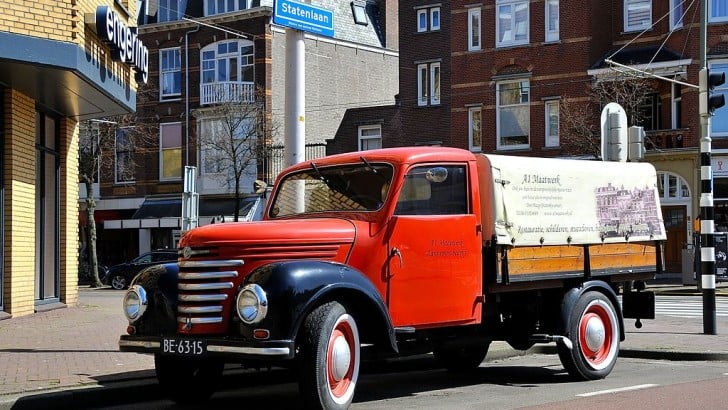
The IFA V 901/2, later called the Barkas V 901/2, was manufactured by VEB Barkas-Werke, Hainichen in Karl-Marx-Stadt (Chemnitz) from 1954 to 1961. It was a body-on-frame vehicle with a front engine and rear-wheel drive that had various body styles, like pickup trucks, minibuses, and panel vans. It replaced the IFA Framo V901 and was later replaced by the Barkas B 1000.
What all-steel station wagon was introduced in 1934 only to become one of the largest SUVs in the market today?
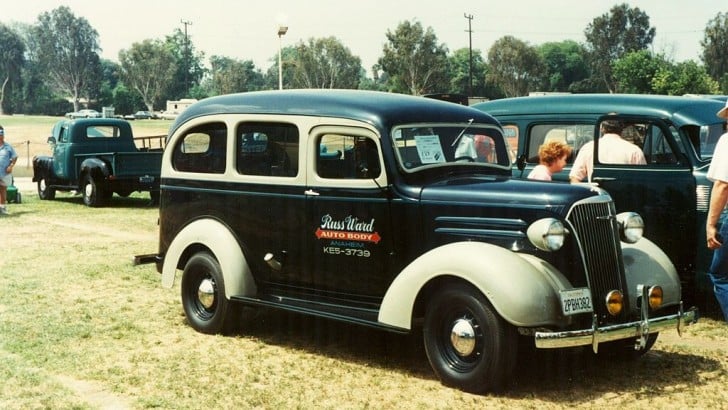
Chevrolet introduced the Suburban in 193, built specifically for the National Guard and Civilian Conservation Corps. Later, the vehicle got rebranded as a "carryall suburban" a utility vehicle that can fit a whole family and their possessions, with seating available for up to eight passengers.
What was the first pickup truck available to the general public that could accommodate up to 6 people?
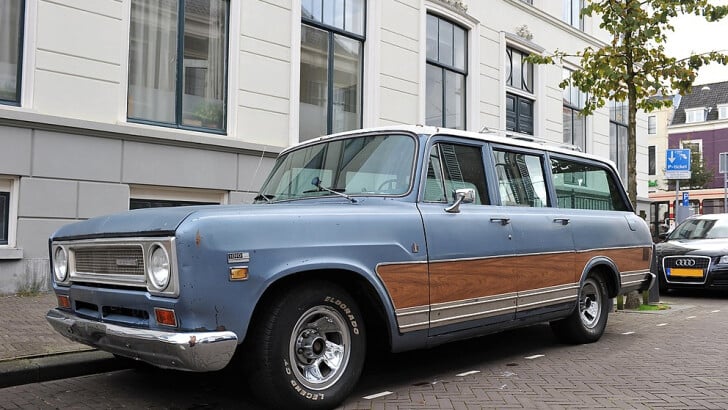
Unless you're a die-hard pickup truck fan, you've probably never heard of the International Harvester Travelette. This eccentric truck was built in 1957. The now-defunct International Harvester was a manufacturer of both vehicles and trucks and agricultural equipment. The carmaker anticipated the increase in interest in pickup trucks as non-work vehicles; the result was brilliant, and other producers rapidly drew inspiration from it.
Name this classic American pickup truck manufactured from 1960 to 1964 and marketed as an affordable alternative to full-sized pickups of the time.
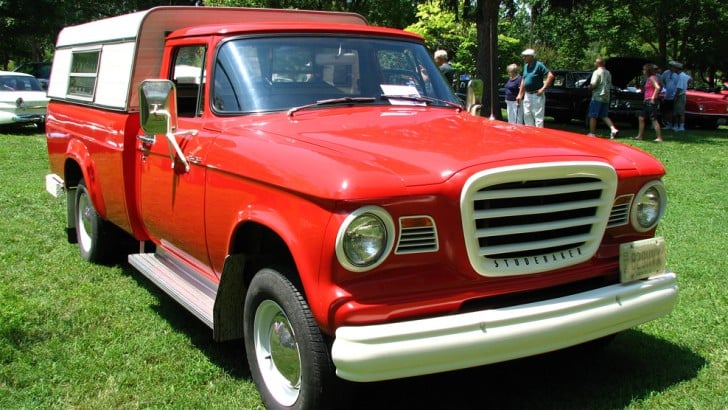
The Studebaker Champ featured a four-cylinder, 2.8L engine that produced just 78 horsepower, making it quite sluggish. However, the Champ was quite reliable and easy to maintain, making it a popular choice for farmers and those who needed a versatile and affordable vehicle. The Studebaker Champ was discontinued in 1964, but its legacy lives on as a classic and iconic vehicle.
This iconic model was fitted with the big block 454 cubic inch V8 engine. Name it.
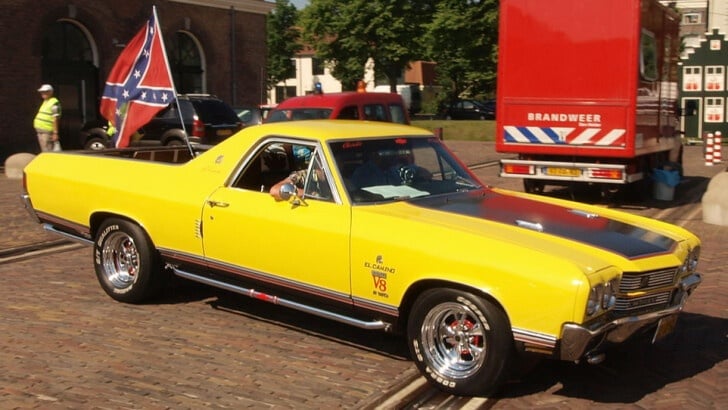
Despite the famed El Camino being a Chevrolet model since the late 1950s, the third generation saw the introduction of its most recognizable version. From the very beginning, the El Camino SS equipped with the large block 454 cubic inch V8 powertrain was in high demand. One of America's best muscle cars of all time is still the potent El Camino SS 454.
Name Studebaker's line of pickup trucks produced from 1956 to 1958 and 1960 to 1963.
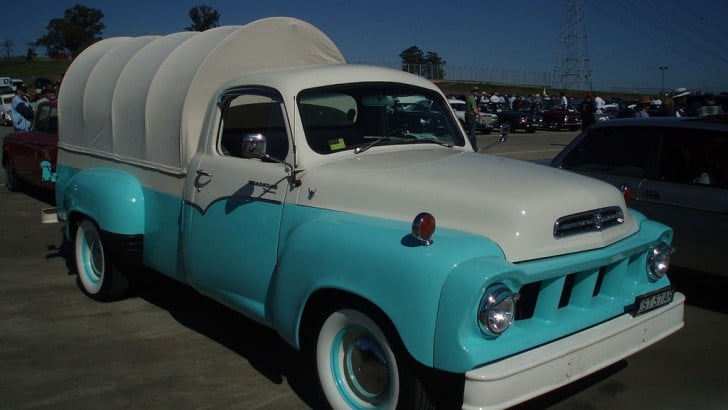
The Studebaker Corporation's line of pickup trucks, known as Transtars, were produced from 1956 to 1958 and 1960 to 1963. In its first year, the Transtar was available in a range of capacities, from 1/2 to 2 tons, with factory-built pickup bodies on the three smaller models. A few styling changes were made in 1954 and 1955, and the Transtar name was used on most of the 1957-58 3E series trucks. The vehicles got a new fiberglass grille in these years, which helped update their look. For unknown reasons, the Transtar name was dropped for the 1959 4E series and changed to Deluxe.
What engines introduced in 1959 were the biggest gasoline V8 engines ever mass-produced and the largest block V8 engines Ford Motor Company had ever developed (for road-going vehicles)?
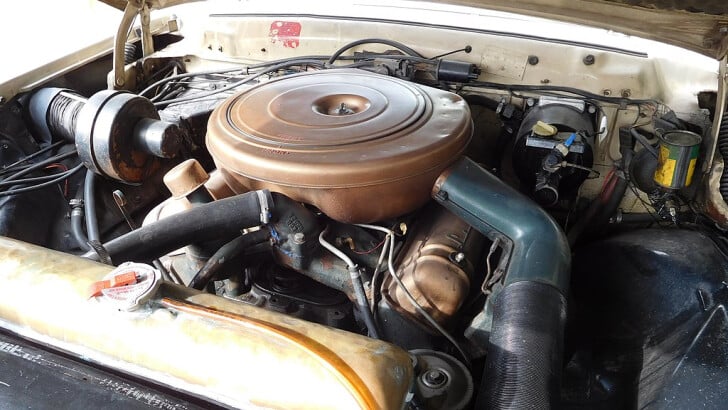
The Super Duty engine family of large-block V8 engines for trucks, available in 401, 477, and 534 cubic-inch displacements, was first developed by Ford in 1958. The Super Duty engines were the biggest gasoline V8 engines ever mass-produced and the largest block V8 engines Ford Motor Company had ever developed (for road-going vehicles).
This truck was part of the second generation of the Chevrolet C/K line. What's the model name?
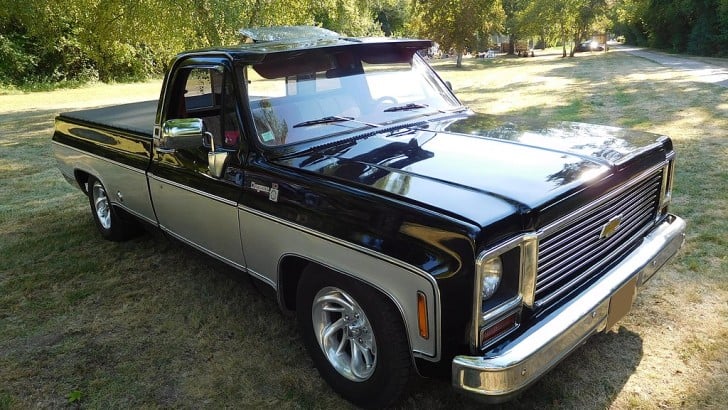
The Chevrolet Cheyenne was first introduced in 1973 as part of the second generation of the C/K line of trucks. It was available with either a V8 or a six-cylinder engine. The Cheyenne package also included a heavy-duty suspension, chrome bumpers, and chrome trim.
What series of Nash trucks were manufactured from 1947 to 1954, mainly for exploratory markets?
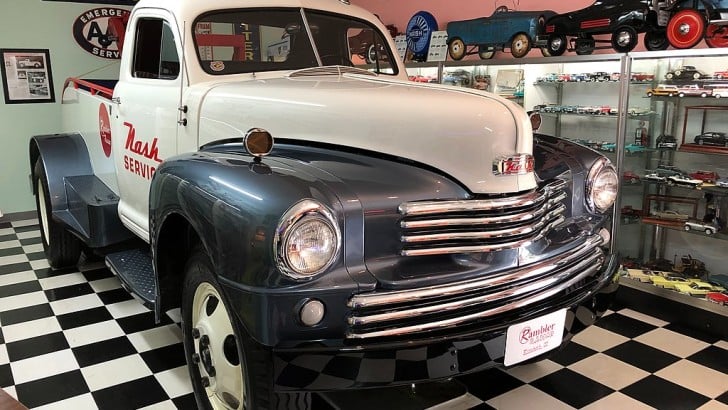
Nash's first trucks were an extension of the Jeffery Quad, a four-wheel drive vehicle used by both civilians and the military. Production of Nash Quads halted in 1928, at which point the company shifted its focus to the production of cars. In 1947, Nash started to manufacture trucks for the export markets and later made them available to its dealers in the US, known as the Nash Hault Thrift.
Name this iconic symbol of American automotive history, designed to work hard and play harder.
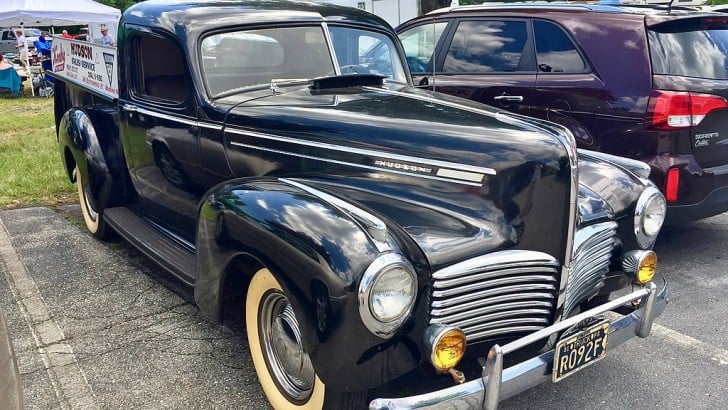
The Hudson Big Boy Pickup is part of the Super Six pickup line produced in the 1940s and 1950s. It featured a Ford 300 cid inline-6 engine, a 4-barrel carburetor, and a split dual exhaust.
What truck series, produced from 1947 to 1968 was marketed in Canada as a rebadged version of the Ford F-Series?
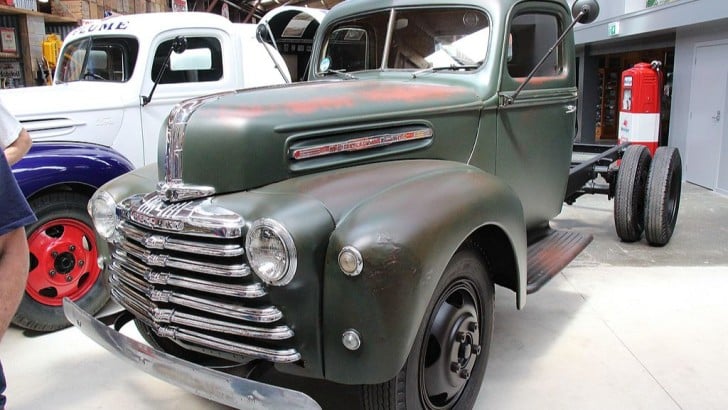
The Mercury M-Series was a line of pickup trucks that was sold by the Mercury division of Ford Motor Company between 1947 and 1968. It was mainly marketed in Canada and featured a rebadged version of the Ford F-Series.
Name this Chinese pickup truck/minivan developed in partnership with Pininfarina.
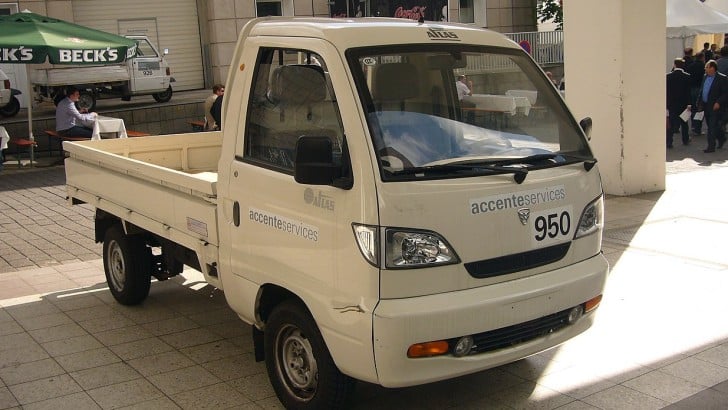
The Hafei Ruiyi is a cab-over pickup truck created by Chinese carmaker Hafei Motor in partnership with Pininfarina. This vehicle is marketed in Brazil and Uruguay by Effa Motors. It has been in production since the late 1990s.
Name this two-door, full-size pickup truck that featured a unique trim package and a 5.2-liter V8 engine that produced over 200 horsepower.
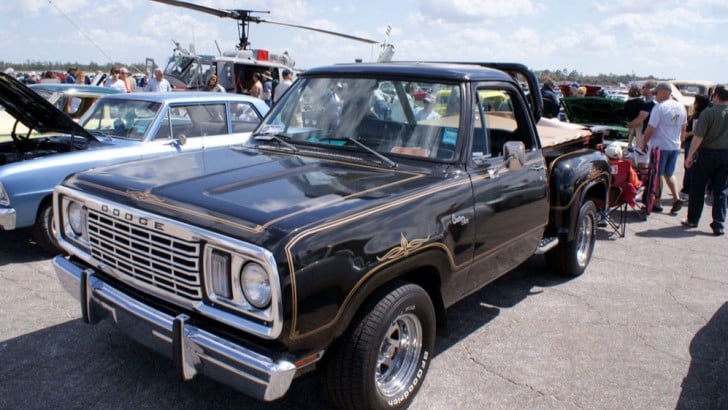
The Dodge Warlock was an iconic truck produced by Dodge in the mid-1970s. It was a two-door, full-size pickup truck that featured a unique "Warlock" trim package. This package included a number of exterior and interior features, such as a black grille with a “Warlock” badge, black bumpers, a unique side-stripe package, and a striking interior. The Warlock also featured a 5.2-liter V8 engine that produced over 200 horsepower and a four-speed manual transmission. The Warlock was only produced for a few years, but it has since become an iconic part of Dodge's truck lineup and a sought-after collector's item.
Ford Bronco, one of the best and most adored American trucks, was in production for three decades from 1966 to 1996. What generation does this model belong to?

Ford Bronco, one of the best and most adored American trucks, was in production for three decades from 1966 to 1996. Fans were thrilled when Ford announced a revival for this model year. For many Bronco enthusiasts, the first generation wasn't quite there yet, and the third generation veered too far away from the Bronco's rough beginnings by emphasizing highway riding. The second-generation Bronco, which was introduced in 1977 for the model year 1978, had a detachable hardtop and a back window that slid into the rear door. It remains the best Bronco to date.
Produced only in 1978 and 1979, this truck was a highly sought-after vehicle due to its performance, unique design, and classic styling. Name it.
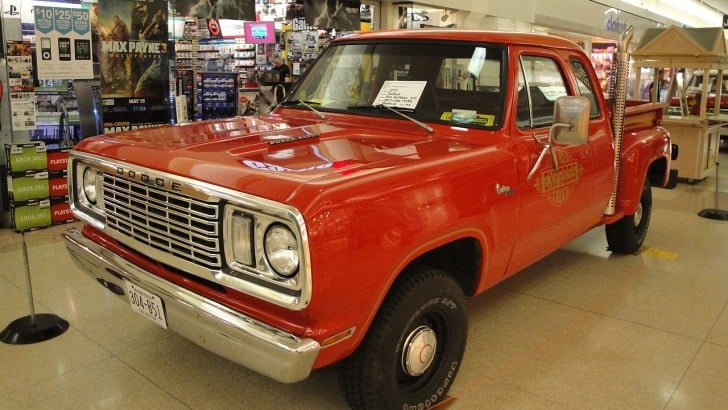
The Dodge Lil' Express Truck was introduced in 1978. It was the first production truck in the United States to be equipped with an emissions-compliant high-performance engine. The truck featured a 360-cubic-inch V8 engine, dual exhaust, and a special old-colored grille and trim. To this day it is loved and adored by muscle car enthusiasts all around the world.
Name this Czechoslovakian pick-up truck manufactured between 1991 and 1995.
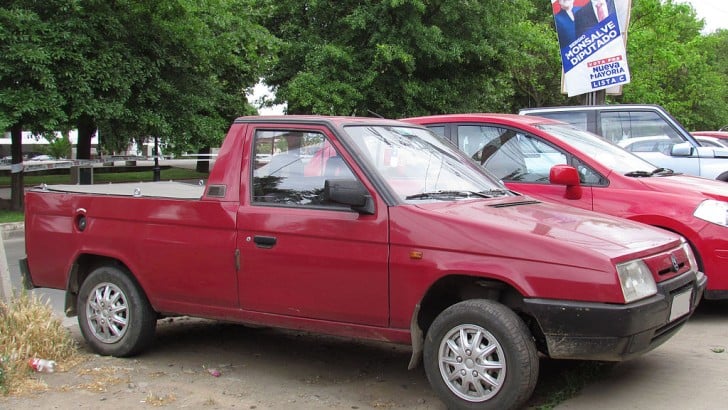
Škoda Auto has used the name Favorit for two series of car models: the Type 904 and 923, manufactured from 1936 to 1941, and the Type 781 range, produced from 1987 to 1995. The former had very limited commercial success, with only 223 units built, while the latter was Škoda's first car to feature a transversely-mounted, front-wheel drive engine. The Favorit was unveiled at the Brno Engineering Fair in 1987.
The American version of this car had a 1.3-liter overhead-cam four-cylinder with carburetion that produced 63 horsepower and 74 lb-ft of torque. Name it.
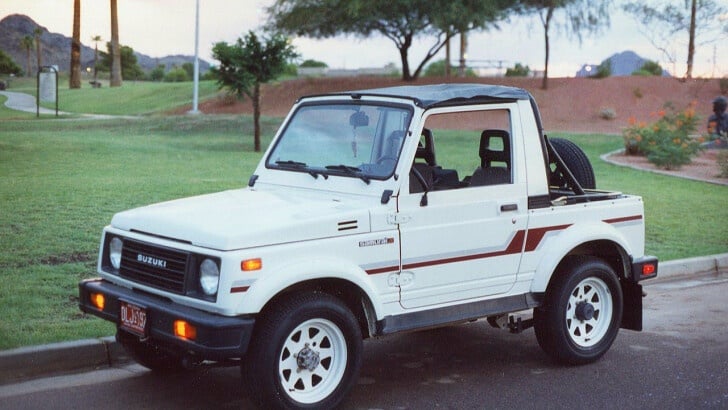
The Hope Motor Company of Japan unveiled the ON360, a little kei-class 4x4 powered by a 359cc Mitsubishi engine, in 1968. Hope was acquired by Suzuki, which used the ON360 to create the 1970 LJ10 ("Light Jeep"), also known as the Jimny. In 1981, Suzuki unveiled the second-generation Jimny, and in 1985 the company started selling the Jimny to the United States as a 1986 model. The American version was branded as the Samurai and featured a carbureted 1.3-liter overhead-cam four-cylinder engine that produced 63 horsepower and 74 lb-ft of torque. It was noisy and slow—MotorTrend recorded a quarter-mile pace of 20.47 seconds at 64.5 mph and a time to 60 mph of 16.9 seconds—but entertaining to drive in town. Off-road, it was almost unstoppable, with its only drawback being its street-spec tires.
Name this utility truck manufactured between 1963 and 1973 and designed by a Japanese carmaker.
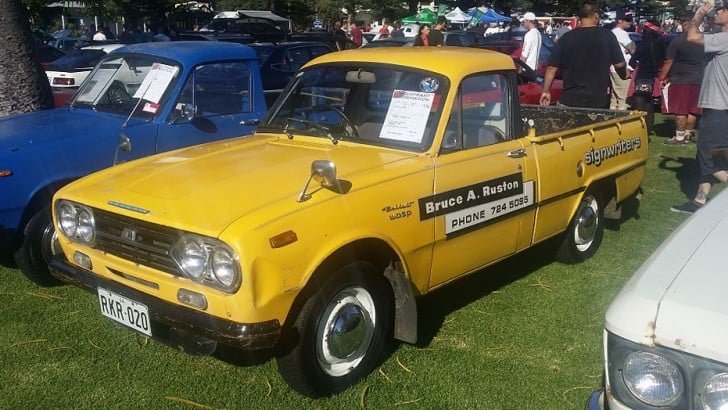
Isuzu Bellett was designed by the Japanese carmaker to replace the Isuzu Hillman Minx. It came in a variety of options, including a four-door or two-door sedan and a two-door station wagon. Following General Motors' acquisition of a stake in Isuzu, the Bellett was replaced by GM's "global" T-car, initially dubbed the Isuzu Bellett Gemini and later simply the Isuzu Gemini, which had few ties to its predecessor.
Name this British four-wheeled, glass-fiber utility vehicle manufactured from 1983 to 1990.
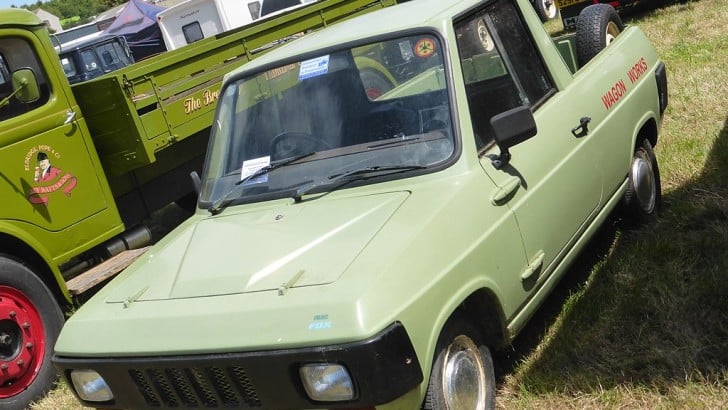
The Reliant Motor Company created a four-wheeled, glass-fiber utility vehicle called the Fox from 1983 to 1990. It was equipped with an 848cc aluminum inline four-cylinder engine and a galvanized chassis taken from the Reliant Kitten vehicle. It was available in various setups, such as a pickup with a hard or soft top, an estate car, a van, or a convertible.
What line of medium-duty trucks was produced from 1940 to 1954 and was popular with farmers, construction companies, and the military?
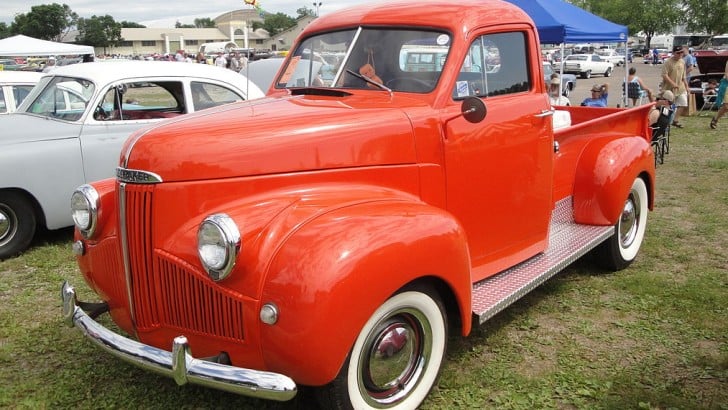
The Studebaker M-Series was a line of medium-duty trucks that was produced by the American automaker Studebaker from 1938 to 1954. The M-Series was offered in a variety of configurations with a range of engines, including gas and diesel, and was available with either two-wheel or four-wheel drive. The M-Series was known for its ruggedness and reliability, and its popularity with farmers, construction companies, and the military led to its long production run. The M-Series was eventually replaced by the more modern Studebaker Big Six in 1954.
Name this Chevrolet workhorse truck, perfect for those who need an engine with plenty of power and torque.
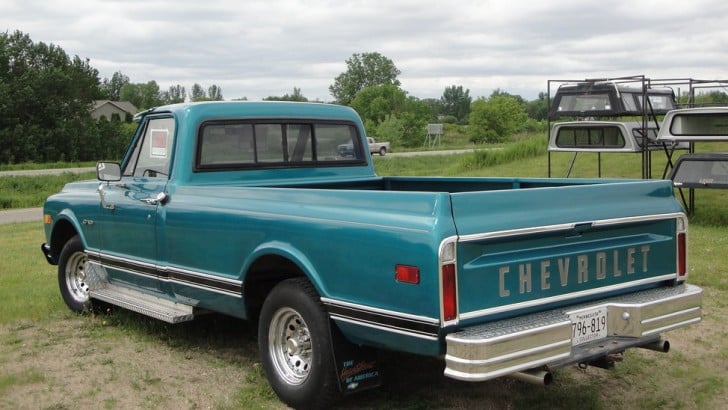
The Chevrolet C20 Longhorn is equipped with a standard V8 engine that produces more than 300 horsepower and 400 lb-ft of torque. It also has an incredibly reliable four-wheel drive system, making it an excellent choice for off-roading or hauling heavy loads.
This truck paved the way for the extended-club cabs we see on the roads nowadays. Name it.
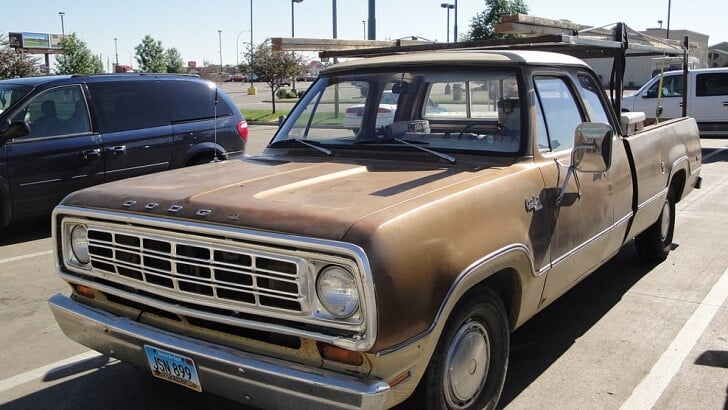
Since Dodge introduced the Club Cab in 1972, extended-cab trucks have come a long way. It represented a significant advancement for pickup trucks as passenger cars. It made it possible for more people to travel in comfort and for more stuff to be kept within a closed vehicle.
The pickup version of this iconic classic car, known as the first Japanese car to be exported to the United States, was manufactured between 1962 to 1971. Name it.
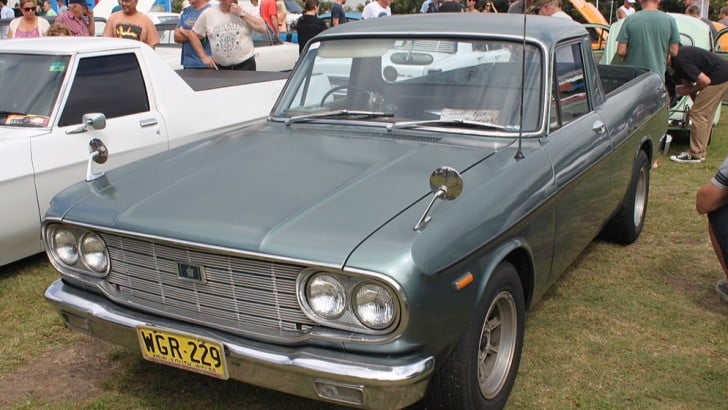
The Toyopet Crown, which debuted in 1955, is the longest-running nameplate on any Toyota model and was the first car from the brand to be exported to the United States in 1958. It was available as a hardtop coupe, wagon, and coupe utility. It's perhaps most famous for being used by government officials, as well as by police forces, and as a corporate vehicle.
Name this light commercial pickup manufactured in 1938 and built on the same chassis as the H-series Vauxhall 10-4 saloon.
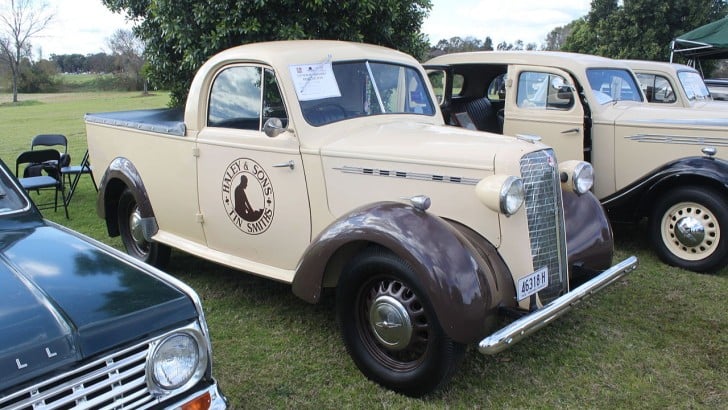
The Bedford HC was built on the same chassis as the H-series Vauxhall 10-4 saloon. Production of the HC was stopped during World War II but resumed briefly following the war. It was later replaced by the Bedford JC and PC, which had higher roofs. The more modern Bedford CA ended production of the PC.
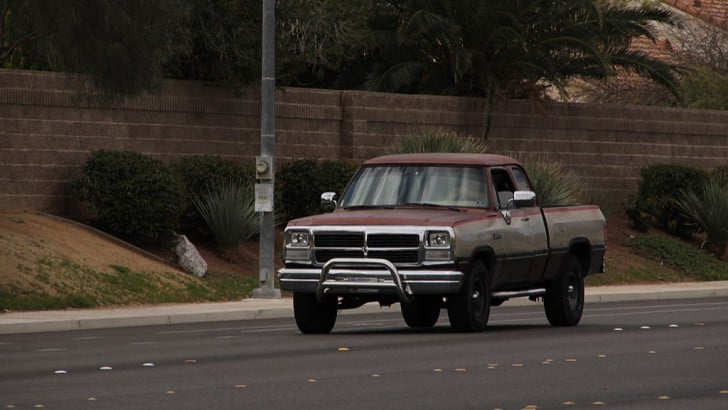
The Ram pickup truck has been in production since 1980, and it's generally considered one of the greatest pickup trucks of all time. Known for its rugged and durable design, the RAM has won Motor Trend's Best Truck Award eight times.
Name this highly dependable midsize Ford pickup truck that has been around since the 1950s.
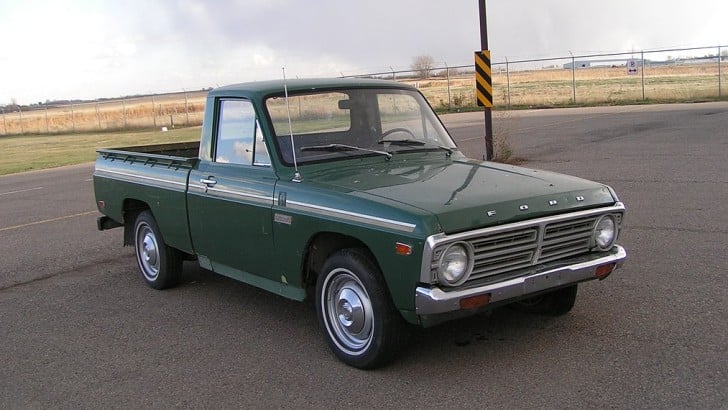
The Ford Courier nameplate was in use from the 1950s until 2013. The models from the '70s and '80s are especially known for their reliability and fuel efficiency, making them a popular choice among small business owners and those looking for an inexpensive truck.
Can you identify this vehicle, introduced in 1968 and designed to compete with the Datsun Truck?
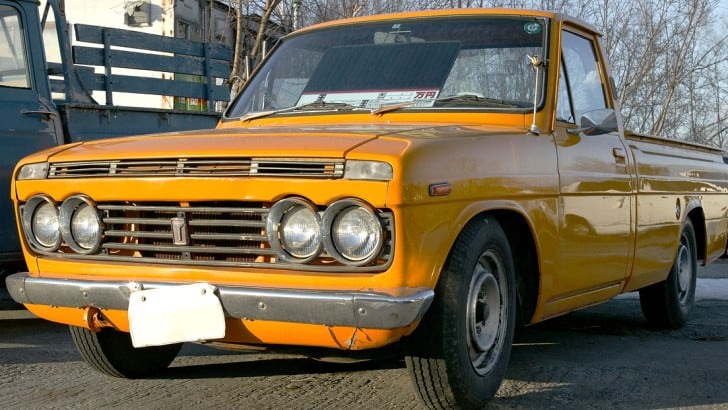
The first generation of Toyota Hilux trucks was introduced in 1968 and was a game changer in the pickup truck market. The Hilux was designed to be a small, lightweight pickup truck that provided a high level of durability and reliability. The Hilux featured an independent front suspension and a 1.5 liter engine that delivered up to 70 horsepower.
What was the first 4x4 medium-duty truck produced by a major manufacturer in a civilian version?
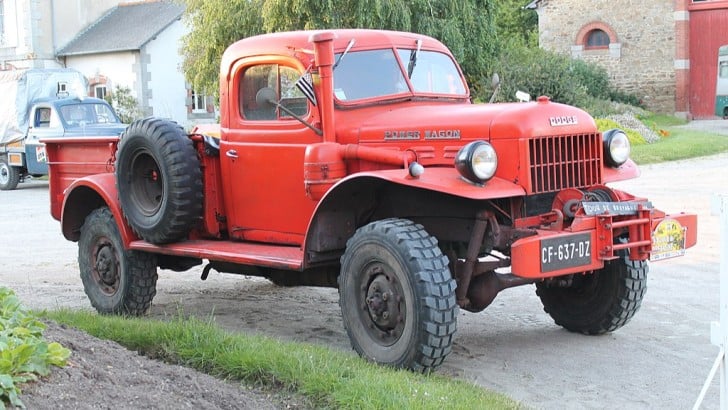
The Dodge Power Wagon was manufactured from 1945 to 1980. It's considered an essential predecessor to most of the four-wheel drive trucks in use today. The Power Wagon was also sold around the world under the Fargo and De Soto badges.
What one-tonne pickup truck did Volkswagen design in cooperation with Toyota in 1989?
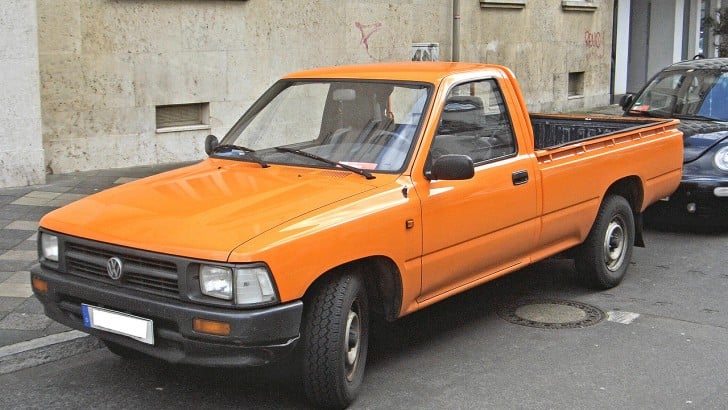
In January 1989, Volkswagen Commercial Vehicles released the Taro, a one-tonne pickup truck designed in cooperation with Toyota. This new truck was designed to supplement VW's existing half-tonne Caddy pickup and Transporter van and chassis cab ranges. The name "Taro" was chosen to signify the eldest son or first-born son of a family, a suffix often used in Japanese culture. The Taro was essentially a rebadged fifth-generation Toyota Hilux, designed and engineered by Toyota, with the two companies joining forces in order to solve each other's problems. Volkswagen had the need for a one-tonne pickup truck, while Toyota sought a larger European market share of the one-tonne utility market.
Name this special performance edition of the popular Jeep Comanche line.
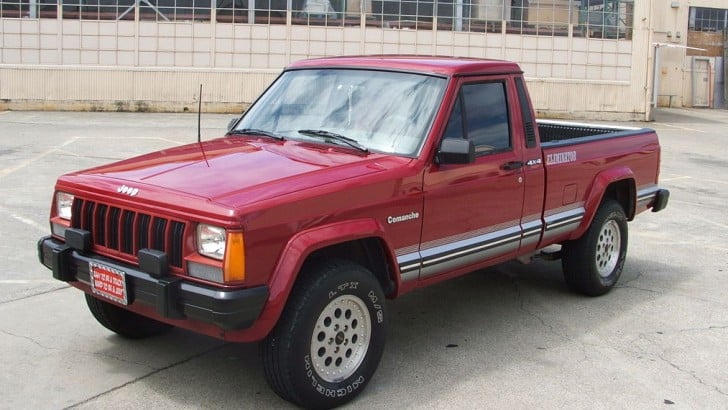
The Jeep Comanche Eliminator was a special edition of the popular Jeep Comanche that was manufactured between 1986 and 1992. The Eliminator featured an array of performance-oriented features such as a 5-speed manual transmission, a beefier suspension, larger tires, and an upgraded 4.0-liter inline-six engine.
Name this truck series designed to commemorate the company's 50th anniversary of truck production.
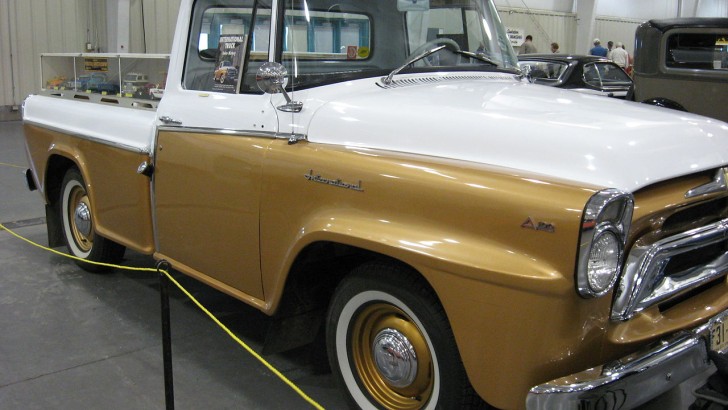
In April 1957, International Harvester introduced the A-line, a new series of trucks to commemorate the company's 50th anniversary of truck production. This series was mainly a restyled S-series, featuring a large cab and more integrated fenders. The A-line was also built and sold in Australia until 1979, both as an International and a Dodge.
Name this British pickup truck built between 1948 and 1972.
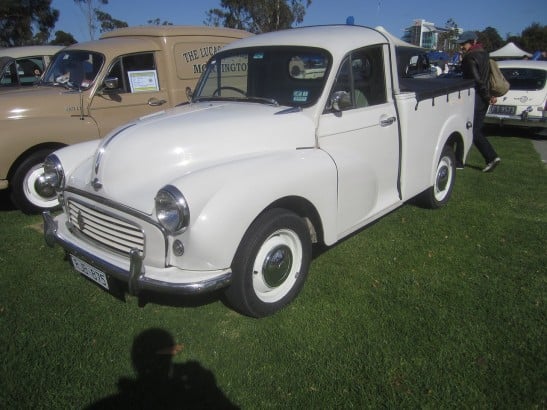
The Morris Minor was available as a two-door saloon, a tourer, a four-door saloon, a wood-framed estate car, a panel van, and a pickup truck. It was the first British car to sell over a million units and is considered a classic example of automotive design and a symbol of "Englishness". Despite the introduction of the Morris Mini in 1959, the Minor continued to be produced for more than a decade, ending its 23-year production run in 1972. Autocar magazine counted it as the twenty-eighth longest-running single-generation car in history.
What iconic one-ton truck was built on the model T chassis and introduced in 1917?

The Model TT was a one-ton truck built on the Model T automobile chassis. It had two more rear springs and a larger rear axle in addition to a stronger frame. The truck made its premiere in 1917 and cost $600.00. Ford just offered the engine and the chassis, leaving it up to the client to either complete it themselves according to their own specifications or hire a coach builder to do so. By the 1920s, Ford offered cabs as an additional $45–$65 option. The TT's adaptability allowed farmers and business owners to utilize it as passenger cars, dump trucks, and fire engines. 1.3 million Ford Model TT cars had been sold by 1928.
Name this classic pickup truck, first introduced in 1961 and equipped with either a six-cylinder or a V8 engine.
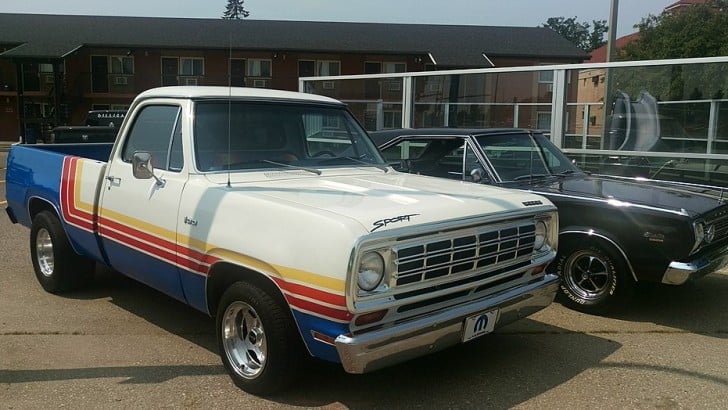
The Dodge D100 is a classic pickup truck that was first introduced in 1961. It was available in two-wheel or four-wheel drive and featured either a six-cylinder or V8 engine. The D100 was known for being a reliable, dependable truck that could haul heavy loads and was perfect for those who needed a vehicle for both work and play. The truck was also well-suited for off-roading, with its powerful engine and rugged build.
What is this truck, produced from 1956 to 1965 and primarily designed as a work vehicle for corporate, municipal, and military use?
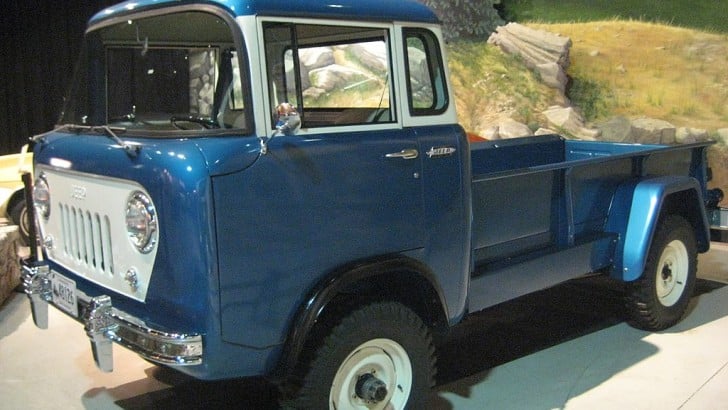
The Jeep Forward Control was later known as the Kaiser Jeep. Although the model was primarily designed for corporate, municipal, and military use, it was later marketed to civilians. The early models featured a 2.2-liter Hurricane F4-134 engine and a 3-speed Borg Warner transmission.
Name this 4x4 half-ton truck known for its dependability and usefulness.

The Chevrolet K10 is the ideal vehicle for the driver who demands the very best in terms of scale appearance, severe all-terrain capabilities, and performance. Part of the C/K series, it was introduced in the late 1960s and featured a V8 engine.
This truck was powered by the reliable "Stovebolt" 6-cylinder engine and had a 3-speed manual transmission. Name it.
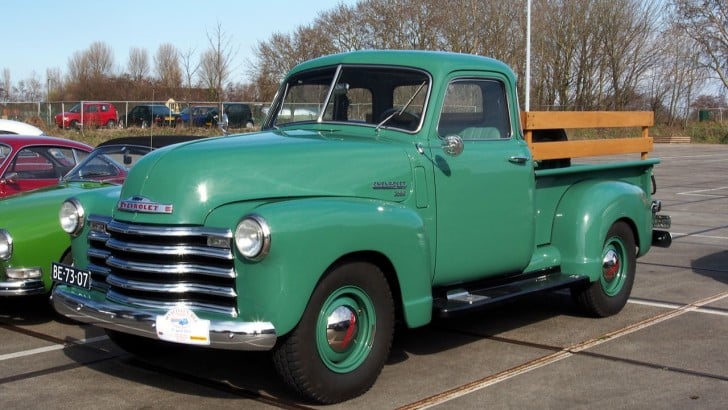
The 1954 Chevrolet 3100 is a classic American pickup truck that was part of the second generation of the popular Advance Design series. It features a large, roomy cab and a wide variety of configurations including a long bed, a short bed, and a stake bed. The 3100 was a popular choice for farmers and tradesmen and is still seen at many classic car shows and events today.
Name this unique vehicle manufactured from 1978 to 1994, known for its off-road capabilities and durability.
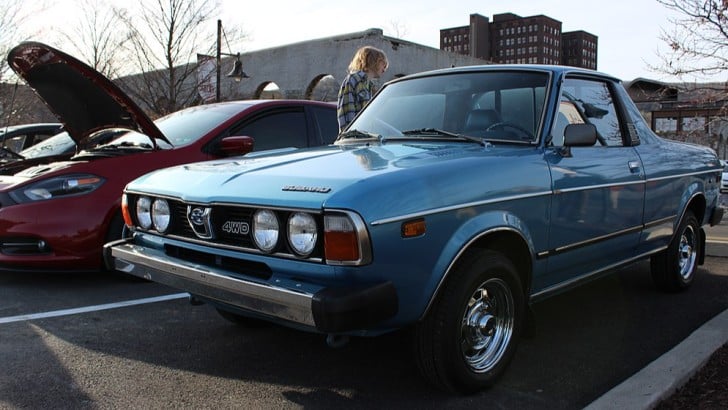
The Subaru BRAT (Bi-drive Recreational All-terrain Transporter) was a unique vehicle manufactured by Subaru from 1978 to 1994. It was one of the first small pickup trucks to be sold in the US and was quite popular in the 1980s. The BRAT featured a two-door cab, four-wheel drive, and a small cargo bed. It was powered by either a 1.6-liter or a 1.8-liter four-cylinder engine. The BRAT was known for its excellent off-road capabilities and durability, making it a great choice for outdoor enthusiasts.
Name this kei truck, a rebadged version of the Suzuki/Carry, sold exclusively in Japan.
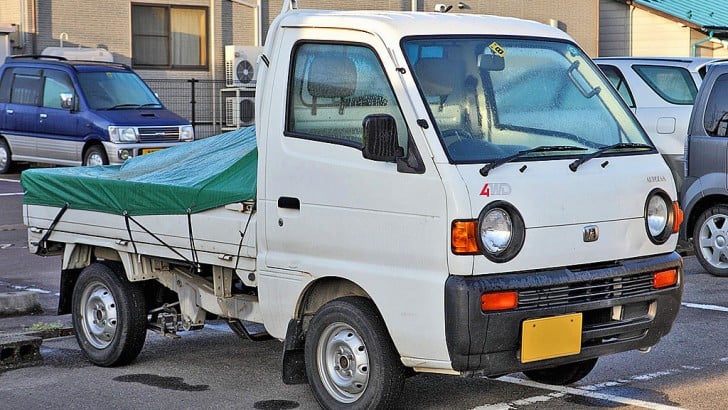
Mazda introduced the Autozam Scrum, later known as the Mazda Scrum, in June 1989. It was a cabover microvan and kei truck, sold exclusively in Japan. The Scrum was a rebadged version of the Suzuki Carry/Every and used Suzuki engines. The initial model was equipped with a 550-cc (cm3) Suzuki F5B engine, which produced 34 PS (25 kW) or 52 PS (38 kW) with an intercooled turbo. Just nine months after its release, the engine was replaced with the larger DG/DH51 (660-cc, 38 PS/28 kW or 58 PS/43 kW) due to changes in kei car standards. Mazda continues to sell the Scrum under its own brand.
What was the first compact pickup truck produced by one of the "Big Three" American automakers?
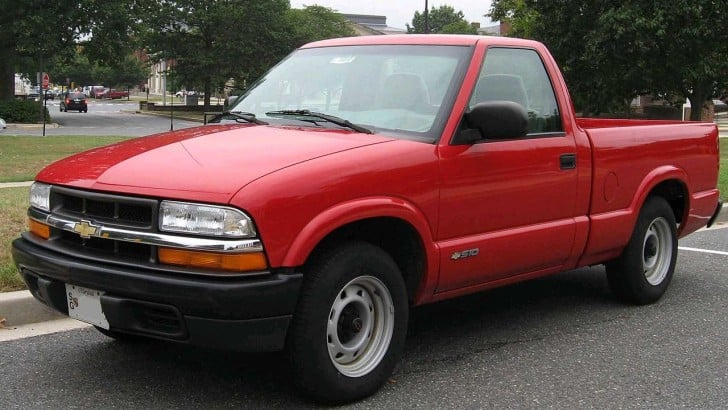
The Chevrolet S-10 is a compact pickup truck that was made by Chevrolet from 1981 to 2005. It was the first compact pickup truck produced by one of the "Big Three" American automakers. GMC produced a similar model, known as the S-15, and later renamed the Sonoma. A high-performance version was released in 1991 and named the GMC Syclone. Isuzu also produced its own version of the pickup, called the Hombre, which was sold in North America between 1996 and 2000.
Name this rare German pickup truck, manufactured primarily for the Argentinian market.
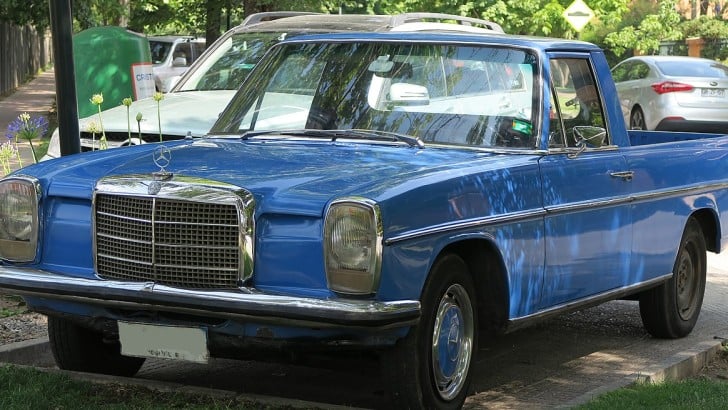
The Mercedes La Pickup is a classic vehicle that offers a unique blend of classic style and modern features. This truck is based on the classic W115 model of Mercedes and powered by a 2.0L 4-cylinder engine, which produces up to 90 horsepower and 80 lb-ft of torque. It is equipped with a 4-speed manual transmission, power-assisted brakes, and a comfortable interior.
This truck is exceptional because of both its availability and aesthetic appeal. In 1962, GMC only produced six of them, and currently, just one is in the United States. Name it.
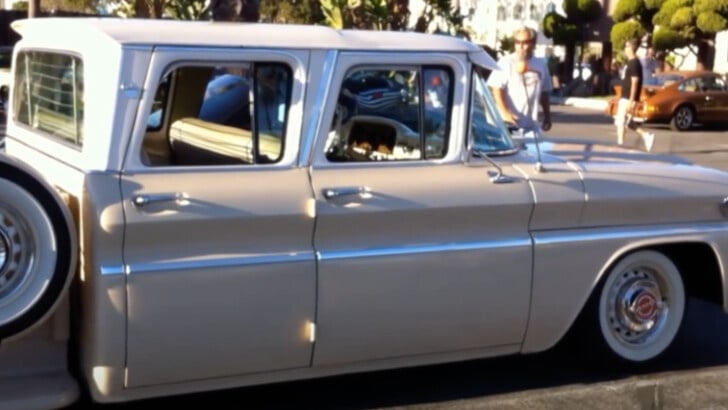
As its name suggests, crew cabs were first designed to transport a six-person work team on the job. GMC crew cabs were converted by coach businesses like Crown Steel Products in Ohio and Stageway Coaches in Arkansas rather than being produced at GM plants in 1962. Only a small number were bought, and the majority were modified for usage on railroad tracks by having retractable front and rear flanged steel wheels, the result being the 1962 Fenderside Crew Cab.
Name this Australian pickup truck manufactured from 1968 to 1984, known as the Chevrolet El Camino in South Africa.
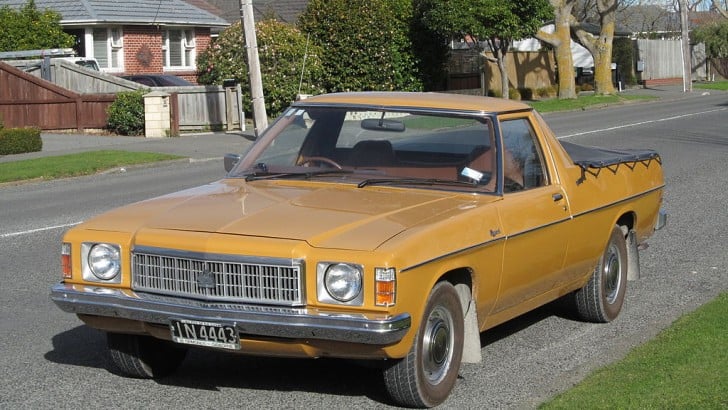
The Holden Kingswood was made by GM Holden in Australia from 1968 to 1984. It was also sold in New Zealand, parts of Asia, and the South Pacific as a Holden. In South Africa, the Holden Kingswood and Premier were badge-engineered as the Chevrolet Kommando and Constantia, respectively. The Holden-style side utility was known as the Chevrolet El Camino, while the one-tonne cab-chassis utility was sold as the Chevrolet El Toro from 1974 to 1978.
Name this pickup truck manufactured by a Chinese automaker, essentially a badge-engineered version of the sixth-generation Toyota Hilux.
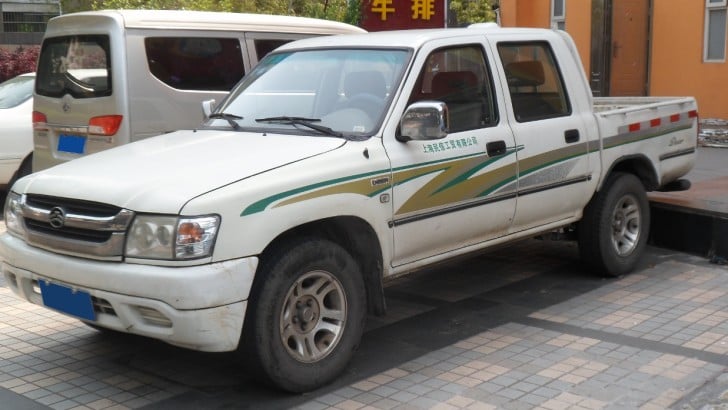
The Great Wall Deer is a pickup truck manufactured by the Chinese automaker Great Wall Motors. It is essentially a badge-engineered version of the sixth-generation Toyota Hilux. It is the pickup version of the Great Wall Safe SUV and has been the most popular pickup truck in China for over nine years. This is the first pickup to be produced by the company in China and was made to replace the Hongqi CA1021U3 pickups, which were based on the Audi 100 cars produced locally in China.
This full-size pickup truck was built and sold from 1962 until 1988 based on the large Jeep (Wagoneer) platform. Name the model.
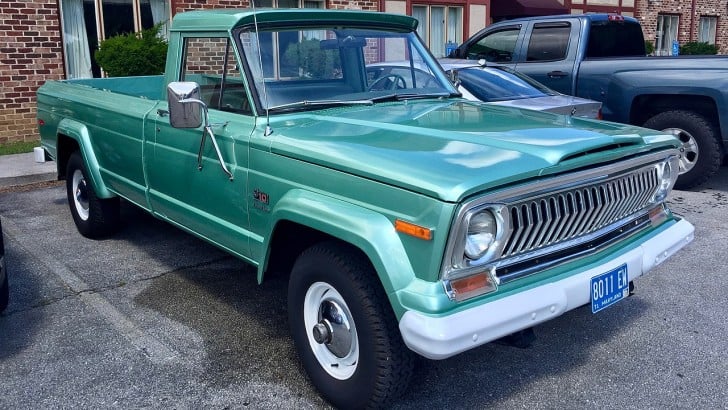
The Jeep Gladiator SJ was introduced in 1962 and remained in production for more than 26 years. Its standard engine was the Jeep Tornado which produced 140 horsepower and was the first production overhead cam to be fitted in an American light truck.
This was developed as a car-based pickup truck, available initially in South Africa and later in Portugal, based on the Ford Cortina. Name it.
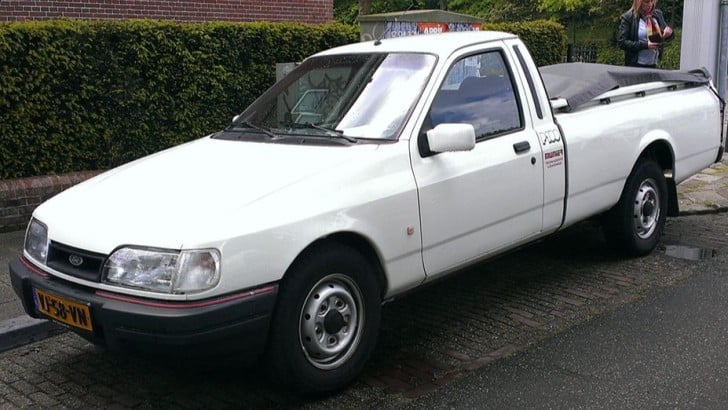
Ford developed the P100 as a car-based pickup truck, initially in South Africa and later Portugal, based on the Ford Cortina/Taunus or the Ford Sierra. Originally known as the Ford Cortina Pickup, the vehicle was rebranded as the P100 in 1982. The P100 name had previously been used for a small North American panel van in the 1960s.
Name this mid-size pickup truck, produced from 1998 until 2006, as part of a series that was referred to as the Proceed.
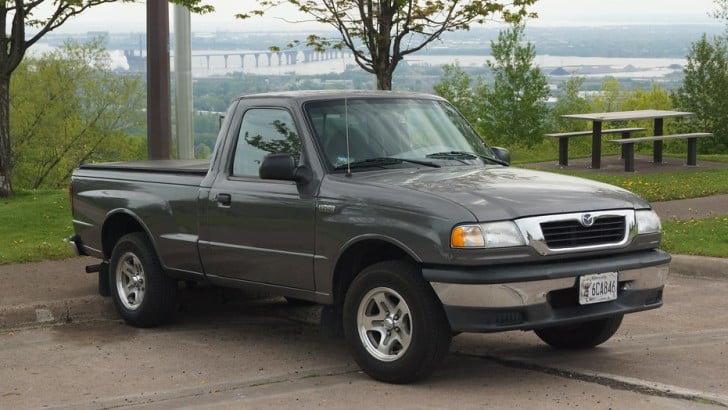
The Mazda B2500 is a mid-size pickup truck that was introduced in 1998. It features a four-cylinder engine with up to 140 horsepower and a 4-Speed automatic transmission. With its comfortable ride and great fuel economy, the Mazda B2500 is a reliable and affordable option for those looking for a dependable pickup truck. The B2500 also offers a lot of features and options, including a towing package, power windows and locks, and a premium audio system. This truck is perfect for taking on camping trips or tackling tough jobs around the yard.
It took 7,000 hours to create this vehicle, which uses the drivetrain and suspension from a Corvette. It was displayed at SEMA in 2009 and earned a GM Design Award before being sold at auction in 2011. Name it.
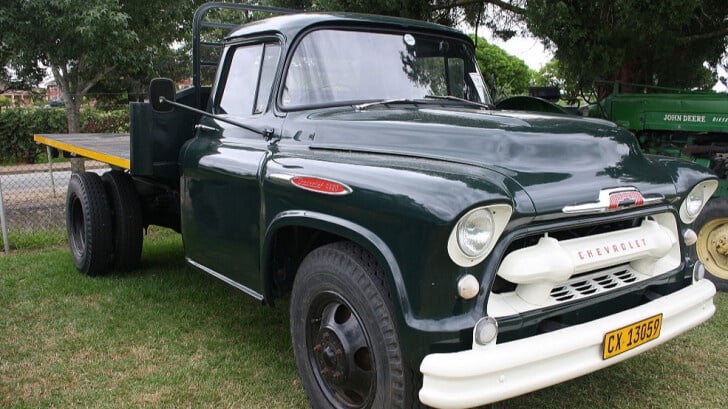
This truck, which borrows a Corvette C6's suspension and drivetrain, took 7,000 hours to finish. Before selling at auction in 2011 for $148, 500 it was shown at SEMA in 2009 where it won a GM Design award.
What was a popular name for the Chevrolet Task Force trucks?
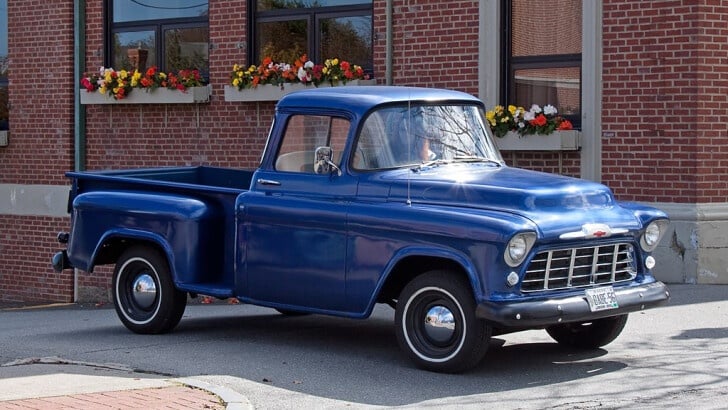
The Task Force, Chevrolet's first significant redesign since 1947, is a line of light and medium-duty trucks. The GMC Blue Chip series served as its GMC equivalent. equivalent. It was advertised as having greater style than the preceding Advance Design Series while yet being extremely durable. A popular name for these trucks was "Apache."
What was Plymouth's alternative to the trucks manufactured by Chrysler in 1936?
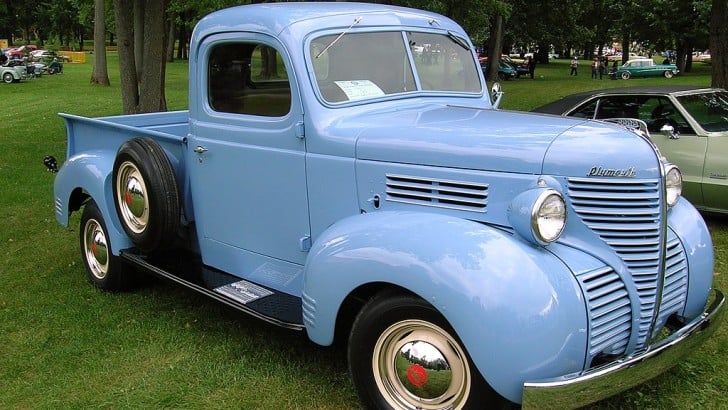
In 1936, Plymouth developed an alternative to the trucks being produced by Chrysler, dubbed the Plymouth PT105 Pickup. This truck was built on a Dodge chassis and four models were released initially, including the Express (the pickup), Cab-and-Chassis, Commercial Sedan, and a Wood Body Station Wagon. For the 1940 model year, the PT105 featured sealed beam headlamps, three horizontal chrome strips on the upper grille shell, and increased power output from 70hp to 79hp for the inline 6-cylinder engine.
Name this iconic American classic that had a lot to offer for its time, featuring a range of powertrains and availability in multiple styles.
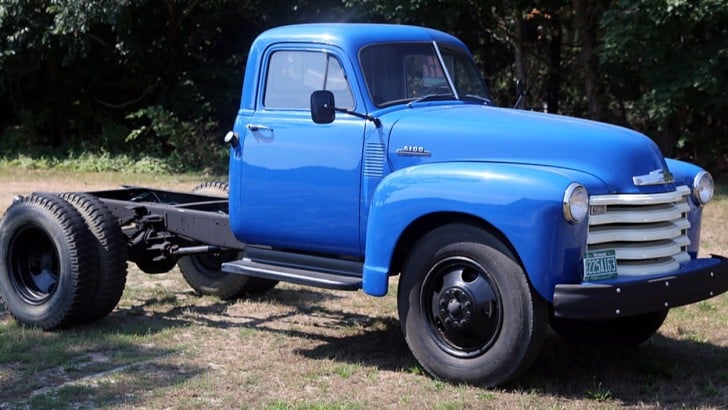
The 1948 Chevrolet Loadmaster was available in multiple styles and had a range of powertrains, from the 6-cylinder Thriftmaster to the 8-cylinder Loadmaster Deluxe. Its robust design included a three-speed manual transmission and a full-floating rear axle.
This truck was a captive import, based on the Mitsubishi Forte, the predecessor to the Triton/L200, introduced in the late 1970s. Name it.
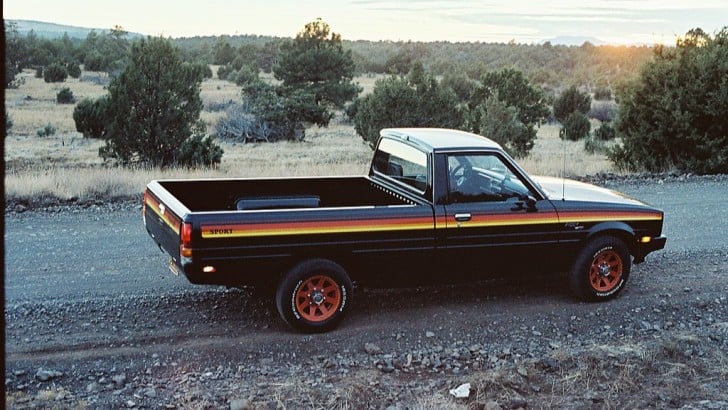
In the late 1970s, Plymouth introduced a compact pickup truck, a rebadged Dodge. It was labeled with the Arrow nameplate just like the compact car which had been released in 1976 and was based on the first-generation Mitsubishi Lancer. The Arrow was nearly indistinguishable from the Forte, the only differences being the steering wheel logo and exterior badges. The Arrow Pickup was highly competitive, with a 6.5 ft bed and a 1,400 lb payload rating. The Mitsubishi sourced four-cylinder engines provided 93 and 105 horsepower, which was more than enough to outperform the Chevrolet LUV.
Rather than creating an entirely new vehicle from the ground up, Chevrolet took the quickest route to enter the small-truck race by importing Isuzu-made models from Japan and renaming them. What did they call this truck?
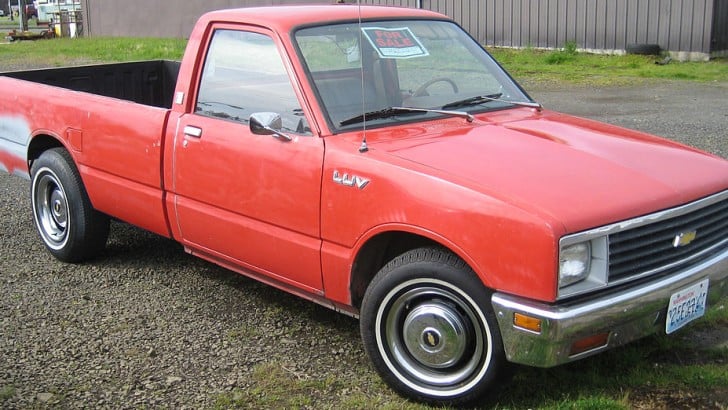
In 1972, when General Motors owned 34 percent of Isuzu, they began bringing the Isuzu truck named the Faster into the United States. The truck was rebranded with a new front grille, badging, and tailgate, and labeled the LUV (short for Light Utility Vehicle). The LUV had a wheelbase of 102.4 inches and a bed that was six feet long. This vehicle was capable of holding up to 1480 pounds and was equipped with a 1.8-liter, 75-horsepower SOHC four-cylinder engine, and a manual four-speed transmission.

